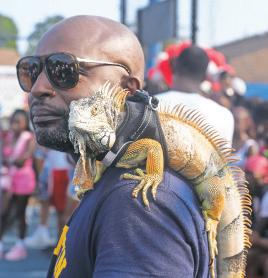



Roni Chastain/Herald
Carrying art in their hands
Jillian Lautib-Machover, left, and her son Miles, 4, had the opportunity to take part in ‘Follies: A Botanical Backstory’ at Planting Fields Arboretum. More photos, Page 10.





Roni Chastain/Herald
Jillian Lautib-Machover, left, and her son Miles, 4, had the opportunity to take part in ‘Follies: A Botanical Backstory’ at Planting Fields Arboretum. More photos, Page 10.
By WILL SHEELINE wsheeline@liherald.com
The Town of Oyster Bay is making significant strides in improving the safety and aesthetics of the hamlet’s downtown area with a $750,000 pedestrian and beautification project that includes upgrades of crosswalks and sidewalks. The project, which is expected to be completed this month, aims to enhance walkability, increase pedestrian safety, and boost the local economy by making the downtown more inviting for residents and visitors alike.
The project will include the installation of stamped-concrete crosswalks with a red brick
pattern at key intersections. The improvements are being made at a dozen crosswalks, including those at Audrey and Maxwell avenues, Shore Avenue and Audrey, and several near Town Hall on Audrey. The upgrades also include new curb ramps, making the sidewalks more accessible for all.
“Over the past several years, my administration upgraded Fireman’s Field and implemented streetscape improvements in areas of the downtown, installing decorative lighting and brick paver strips along the curb line,” Town Supervisor Joseph Saladino said in a statement provided by town spokesman Brian Nevin. “Now, we are


By WILL SHEELINE wsheeline@liherald.com
The Mill Neck Manor School for the Deaf recently announced the near-completion its new Learning Commons, a state-ofthe-art STEAM (science, technology, engineering, art, and mathematics) facility designed to offer students a more interactive and technologydriven educational experience.
The project, which began roughly a year and a half ago, was driven by the school’s commitment to providing its deaf and hard-of-hearing students with access to the same resources and opportunities available in other public schools.
The Learning Commons was developed under the leadership of Dr. Bradley Porche, the executive director and superintendent of the Mill Neck Manor School for the Deaf. Porche, who has a background in technology administration and previously established a STEAM lab at the New York School for the Deaf,
said that he recognized the need for such a facility at Mill Neck.
“When I came here to Mill Neck, I realized that our students needed access to the same kinds of resources that students in public schools have,” Porche, who is deaf, said through sign language with the assistance of Donna Gualberti, a staff interpreter for the school. “We’ve always provided equal access, but the idea was to expand the knowledge and skills our students could acquire, especially as STEAM education can be applied to all different jobs in real life.”
The Learning Commons occupies what was formerly the school’s library, which Toula Ramey, director of development and communications for the Mill Neck Family of Organizations, said has been completely reimagined to accommodate a range of technology and science-based activities. She added that the renovation was not about creating more space but about optimiz -
CONTINUED ON PAGE 9



199 Prospect Avenue, Sea Cliff, NY
Welcome to Hill View Cottage, registered with the U.S. National Register of Historic Places - circa 1890. The residence is architecturally significant as a distinctive example of Sea Cliff’s summer resort architecture, originally constructed as a private summer house. Hill View now offers 4 bedrooms and 2.5 bathrooms, 3 amazing levels of living and quiet, private, terraced gardens in which to relax and unwind. Featuring a beautiful slate roof, exquisite craftsmanship inside and out and a white, handmade, Victorian fence. Lovingly cared for for many years with many recent updates. Come see this beauty - I promise you will fall in love. MLS# 3569654. $1,249,000.
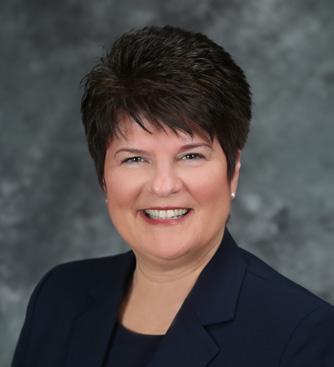
Susan Castelli
Real Estate Salesperson
c.516.885.1631
susancastelli@danielgale.com

By WILL SHEELINE wsheeline@liherald.com
Raynham Hall Museum hosted the first of its artist talks on Aug. 1, featuring local artists whose works are currently displayed in the museum’s “American Dream” exhibit. The event highlighted the diverse interpretations of the American Dream through various artistic mediums, offering attendees a chance to explore identity, history, and ambition.
Justine Lake-Jedzinak, Raynham Hall’s Director of Education and Public Programs, introduced the event, emphasizing the unique perspectives of the three featured artists: Joan Harrison of Sea Cliff and Katherine Jackson and Joan Digby of Oyster Bay. The artists, each working in different mediums, engaged with the concept of the American Dream in distinct yet interrelated ways.
Joan Digby, a ceramic artist and poet, opened the discussion with her pieces that reflect on the fraught history of the American Dream. Digby’s works featured three notable figures: Phyllis Wheatley, Walt Whitman, and Pete Seeger. She described how Wheatley, the first Black poet in America, embodied the complexities of the American Dream as both a symbol of hope and a reminder of the country’s slave-holding past.
“By the age of 12 Phyllis Wheatley was publishing poems, not just here but also abroad, where she became extremely well-known,” Digby said. “So when you think of the American Dream and how fraught it is, and how filled with conflict, a lot of the anxiety comes from America as an early slave-holding country.”
Jackson’s contributions to the exhibit included a series of etched glass works, exploring the intersection of dreams and reality. One of her pieces, inspired by poet Lynda Hull, delves into the darker aspects of the American Dream, drawing connections between ambition, addiction, and the quest for utopia. Another of Jackson’s works, a set of cast glass oil cans, served as a “reliquary of the industrial age,” reflecting on the nation’s dependence on fossil fuels and the shifting nature of American prosperity.
“It’s not just the American Dream, which if you think about it is like an ambition for some kind of utopian quest,” Jackson said. “I think that very complicated American Dream is somehow captured in this.”
Harrison, the final artist to speak, offered a personal perspective on living the American Dream. Her work included a series of paintings and pastels that capture the landscapes and people of the North Shore, particularly focusing on the changing environment and the impact of climate change on local beaches.
Harrison explained that her art, which ranges from imaginative portraits to realistic depictions of nature, reflects her deep connection to the area and her concerns about the future of the American Dream in the face of ecological threats.
“I spent many years as a photographer, and I work in many different mediums,” Harrison said. “One of my pieces is called ‘The Realtors,’ because North Shore real estate has gone so berserk.”
The artist talk concluded with a visit to the exhibit, allowing attendees to engage directly with the artworks and consider their own interpretations of the American Dream. The exhibit remains open at Raynham Hall Museum until September 22, offering the public a chance to explore these complex and compelling visions of America’s most enduring ideal.
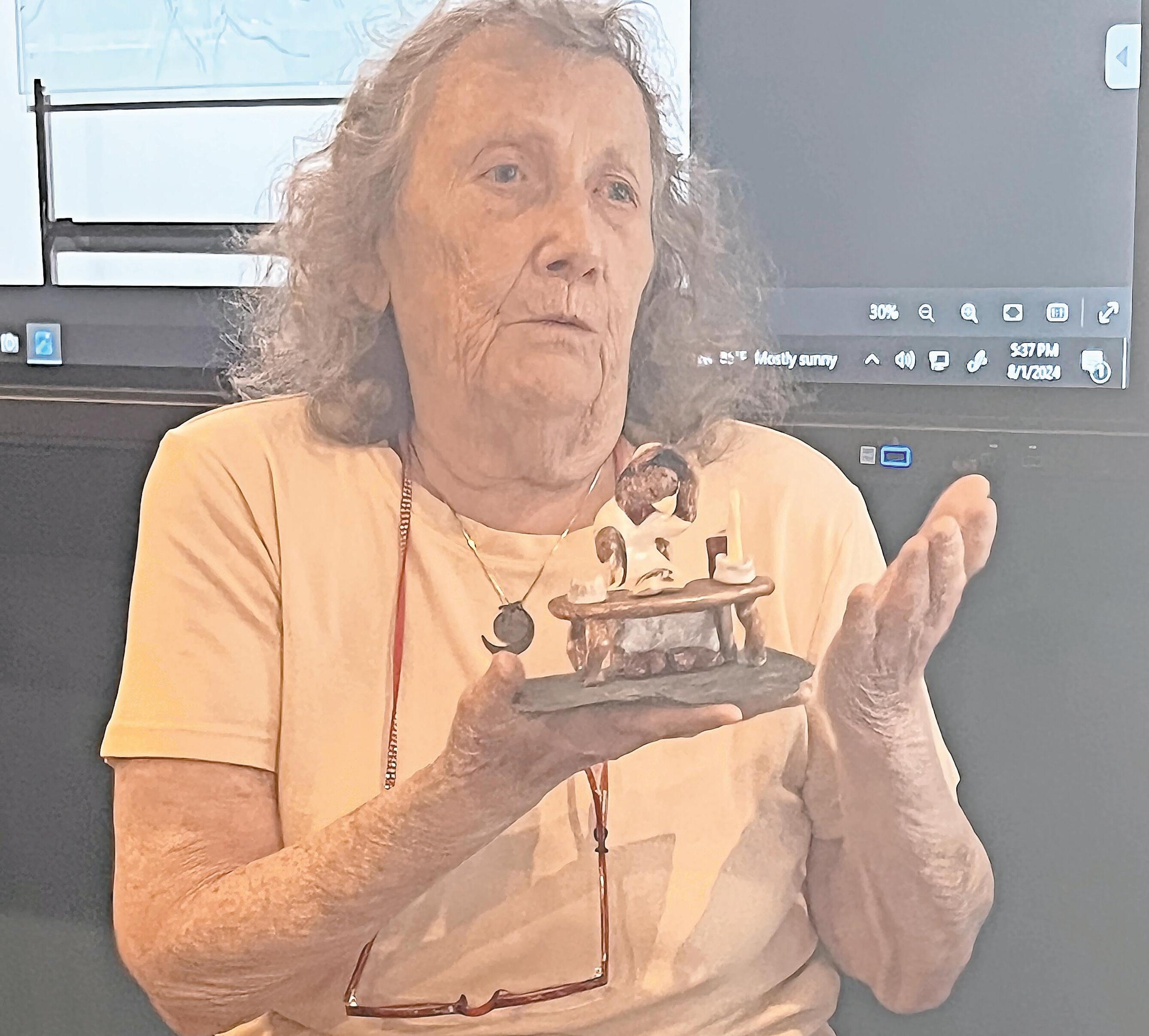

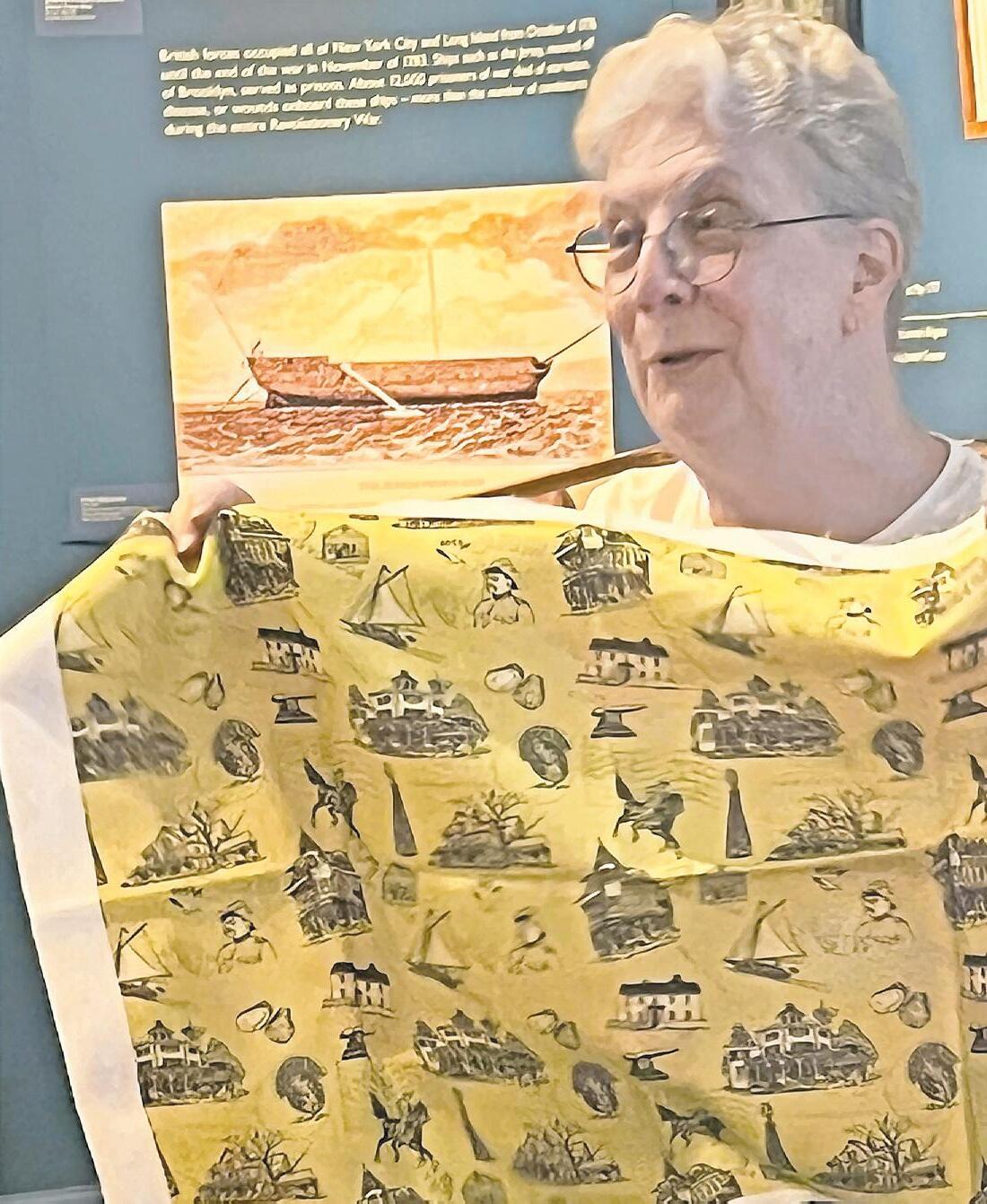
moving forward with more investments in decorative crosswalks at all intersections to replace the existing painted crosswalks. This project will help beautify our downtown and create a safe zone for pedestrians and bicyclists that motorists can both see and feel, which should encourage lower speeds.”
The enhancements are intended to create a consistent and recognizable theme for the downtown area, improving both its function and appearance.
The funding for the project comes from state grants and town capital funds, with $500,000 provided by the state and the remainder covered by the town — part of a broader effort by the town to revitalize its downtown areas and make them more pedestrian-friendly.
Meredith Maus, executive director of the Oyster Bay Main Street Association, a nonprofit dedicated to preserving the hamlet’s historic character while enhancing its vibrancy, expressed her enthusiasm about the project and its potential impact on the community.
“Walkability really is a large portion of what we try to do, because you’re trying to create a connected, safe, walkable downtown,” Maus said. “The more that people walk in the downtown, the more they frequent the shops, which only serves the community better overall.”
She emphasized that the visibility of the new crosswalks is a critical factor in

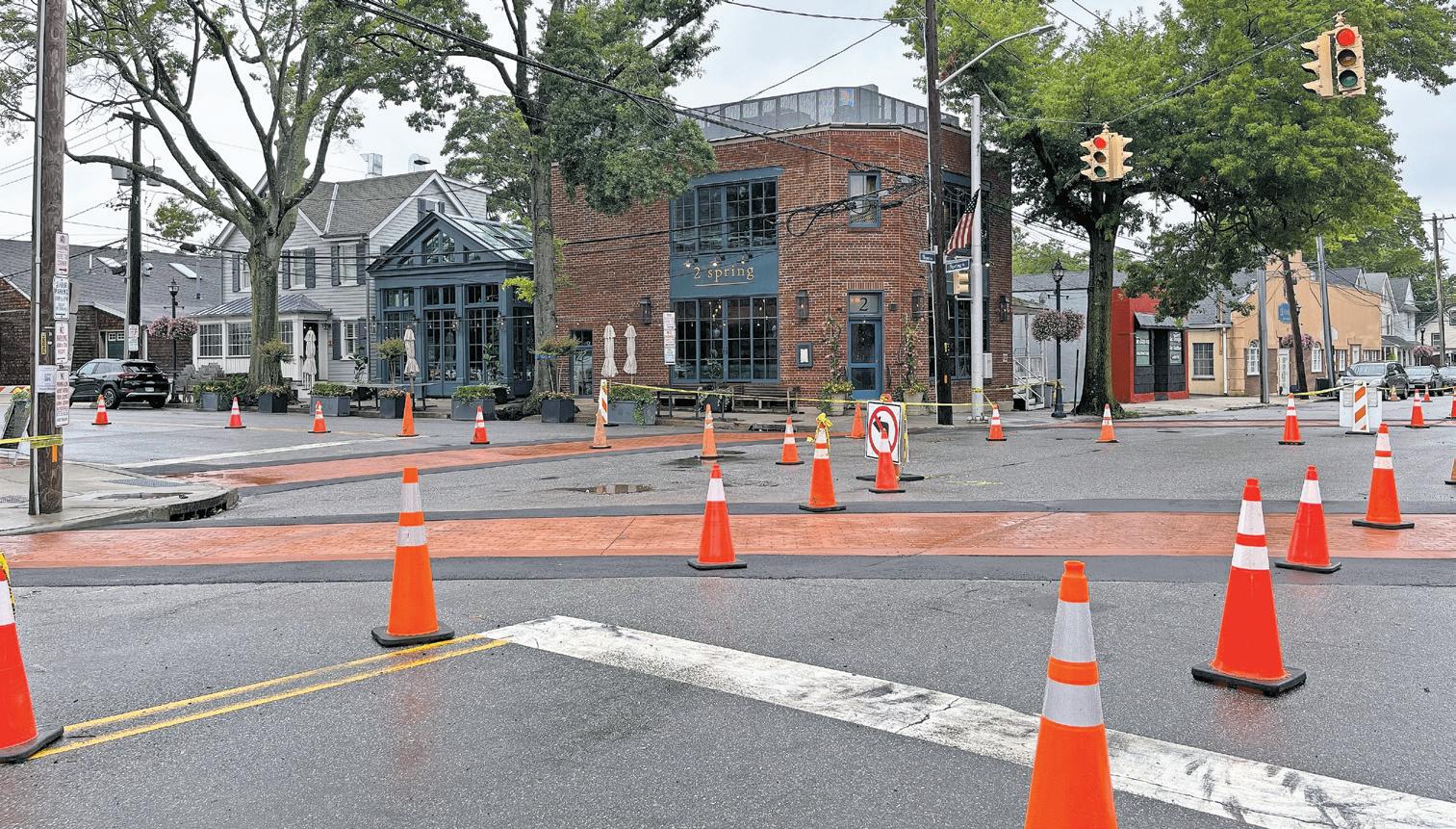
improving pedestrian safety. The red brick pattern, Maus noted, not only enhances the aesthetic appeal of the area, but also serves as a visual cue for drivers as well as pedestrians, helping to increase awareness and reduce the likelihood of accidents.
“Having something that better highlights where you should be yielding is a great way to break up the monotony and make you more conscious as a driver,” she said.
The current project follows previous

We all know the road to you know where is paved with good intentions. Nowhere is this more true than leaving a vacation or beach home for the children to share after the parents have passed. We have often advised that if they are all happy and get along well this might very well lead to the end of those good feelings and relationships.
Inevitably, some will do more work on the premises than others, some will use the premises more than others, there will be disagreements as to maintenance and repairs. Some may never visit or use it at all. Initially, all expenses tend to be shared equally, since all are equal owners. The foregoing issues, however, will quickly arise and then it will often be difficult or impossible to determine what each child’s fair share of the expenses should be. The one living across the country who never visits may insist that they be “bought out” or, if that’s unaffordable to the others, that the house be sold so that they can get their share.
Sooner or later, one of the siblings dies
and their share goes to a sister-in-law or brother-in-law who may remarry and bring a stranger into the shared arrangement. Or let’s say an owner of one-third of the house dies, and now their share goes to their four children. How is that going to work?
Vacation homes are an excellent example of why good estate planning is often more social work than legal work. In these cases we anticipate the problems and spend the time to figure out who wants and uses the home and perhaps leave it to those children only and compensate the others with money or other assets. If they all use and enjoy the home, we sometimes require that it be held jointly with the right of survivorship, allowing the last of the joint owners to decide who to leave it to.
While the possibilities are endless, each case should be looked at and thought through so as to keep harmony in the family by preempting any potential conflicts. Otherwise, it’s often a case of the old adage that “no good deed goes unpunished”.
improvements made by the town, including the recent transformation of Fireman’s Field, a once-neglected parking lot that has been turned into a more attractive and environmentally friendly space. The $3.6 million renovation of the field included the addition of lighting and greenery to make the area more pedestrian-friendly as well as improved drainage.
All of the work is part of an effort by the town to make the downtown more cohesive and inviting, and to create a
stronger connection to the waterfront. Maus emphasized that the projects, each significant on its own, are even more impactful when considered together as part of a broader vision for downtown revitalization.
“These projects are great in and of themselves, but it’s also so important to see them in the context of what the culmination of these investments means for our downtown,” Maus said. “Prior to Fireman’s Field being done, there wasn’t a great feeling walking down Shore Avenue from the post office all the way to the western waterfront, but now it’s an incredibly inviting, beautiful area. People feel comfortable parking there now, and it all just goes to the betterment of the downtown.”
She added that the downtown investment will hopefully yield significant benefits for local businesses, by making the area more accessible and attractive to shoppers and tourists. The upgraded crosswalks are designed to encourage walking, which in turn supports economic activity by increasing foot traffic at local shops and restaurants.
“We were extremely excited,” Maus said of the town’s decision to move forward with the upgrades. “It’s definitely an investment that the town had been looking to make for a little while, and we were so happy that they were able to secure those funds and make that happen for our downtown.”

■ WEB SITE: www.liherald.com/oysterbay ■ E-MAIl: Letters and other submissions: llane@liherald.com ■ EDITORIAl DEPARTMENT: Ext. 327 E-mail: oysterbayeditor@liherald.com
■ SUBSCRIPTIONS: Press ”7” E-mail: circ@liherald.com Fax: (516) 569-4942
■ ClASSIFIED ADVERTISING: Ext. 286 E-mail: ereynolds@liherald.com Fax: (516) 622-7460
■ DISPlAY ADVERTISING: Ext. 249 E-mail: rglickman@liherald.com Fax: (516) 569-4643
■ PUBlIC NOTICES: Ext. 232 E-mail: legalnotices@liherald.com
















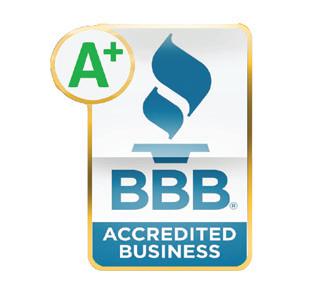




















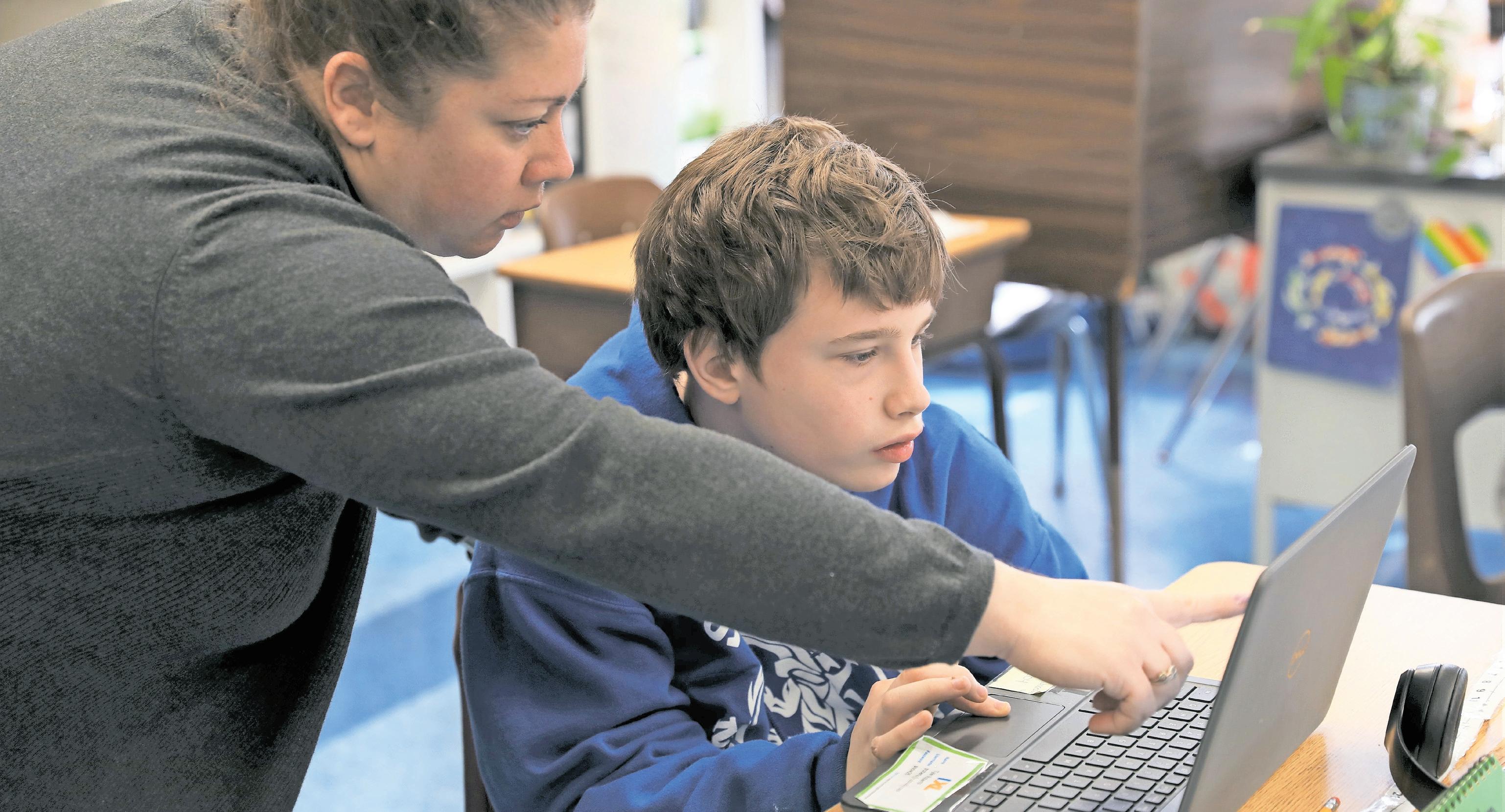
Embracing new technologies like ‘adaptive learning’ is proving to be key to keeping
By Nicole Wagner & Danielle Schwab
Continuing a series exploring the presence of artificial intelligence in our schools — and, over time, in society as a whole. Thoughts? Questions? Ideas? Email us at execeditor@liherald.com.
While some educators have gotten acquainted with artificial intelligence hesitantly, many school districts across Nassau County have embraced the technological tool in the classroom. It’s no secret that AI is changing the academic landscape. Educators, parents and students are in a race to keep up with its abilities, and especially about how it can — and will — be used in education. A helpful visual representation of just how AI can help students is a ramp. Ramps are used in buildings to make different levels accessible to people who can’t climb steps. But many of those who can take the steps use ramps as well. AI can be seen as a tool that all students can use to make education more accessible and to serve their individual needs.
The Franklin Square school district has embraced AI as a way to help individualize education for students from pre-K through sixth grade. District Superintendent Jared Bloom spoke with the Herald about the multitude of ways AI can help keep students engaged, tai-
loring lessons to their interests.
One tool that district students and parents have used is Goblin.Tools, an AI-powered site that can identify an essay’s key points if a student need to create a Power Point or poster board for a given assignment.
“You can even break those chunks into smaller chunks,” Bloom said. “So it really becomes manageable, and you can really understand what are the key components of that assignment.”
Another way in which AI can help teachers and students is by varying the reading level of a passage. This has been a welcome change for educators in Franklin Square, Bloom explained: 20 years ago, teachers had to find a handful of different reading passages for the various skill levels in their classrooms.
student’s interests, whether it be music, sports, art or anything else. “We know that when students are interested in a topic, they’re going to be more engaged and more open to learning,” Bloom said.
Nassau County BOCES’ Special Education Department, which serves 1,800 students at 10 Nassau BOCES schools, is exploring AI’s potential in special education. Ken Kroog, assistant director of the department, said that AI can help students through what’s known as “adaptive learning.” During online assessments, AI tailors questions based on a student’s performance in real time.
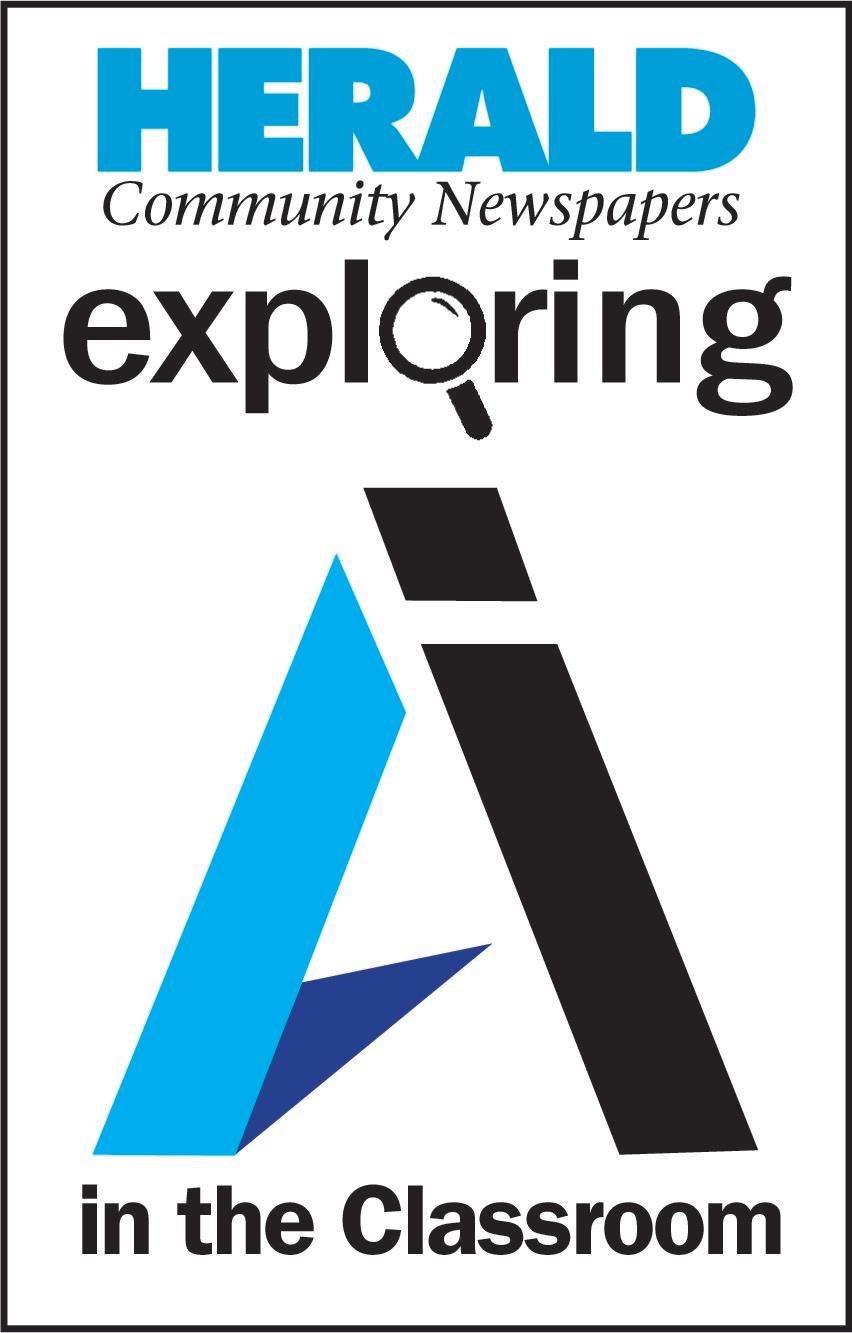
“Now you can take one passage and run it through AI, and be able to hand that reading out to kids all on the same topic without having to go out and get new material,” Bloom said. “And that’s very helpful for students.”
The promise of personalization in any subject excites Bloom about AI. A fourth-grade math problem can be plugged into AI and personalized to a
“So let’s say if I answer correctly or achieve a certain level of proficiency, the subsequent questions will challenge me at a greater level,” Kroog explained. “So you get a real clear picture of where, exactly, I’m performing across the different skill areas.”
Students who are visually or audibly impaired can use tools like Otter.ai to transcribe a lecture to better understand what is going on in the classroom. Katherine Lewis, a disability counselor at Nassau Community College, said she uses this tool to help students. AI can be a great help for students who are strug-
gling to understand a topic — and for families who can’t afford a home tutor.
“To be able to sit with your child and utilize some of these tools that are out there, free of charge, helping support an understanding of a particular topic, is pretty magical,” Bloom said.
Students at NCC can benefit from AI when the college’s learning centers are unavailable. Genette Alvarez-Ortiz, vice president of academic affairs, said she hoped it could be used around the clock to help students when staff are not accessible.
“In terms of availability, there are challenges with the evening coverage and weekend coverage,” Alvarez-Ortiz said of the college’s learning centers. “We may be able to look at AI as a possibility to help support our learning centers.”
Benefits that AI offers educators
Staff in the Franklin Square school district have reported that personalization and customization of lessons for students can “support students in new and different ways that we wouldn’t have been able to do as easily” without AI, according to Bloom. These tools help teachers save time when creating lesson plans.
“I’m really hopeful that we’re going to be able to get to that point where we’re utilizing AI to make everybody’s life a little bit better and easier,” he said,
“and as a result of that, we’re customizing and personalizing for kids in ways that we wouldn’t have been able to do as quickly before.”
BOCES educators have not only used AI tools as time-savers when creating lesson plans, but have also used them as “thought partners,” Kroog said. “It allows special educators to differentiate learning for students, customizing instruction for specific learning needs and leveraging their strengths to give them a very personalized, individualized learning experience,” he said.
This helps teachers in the Special Education Department at BOCES as they work on time-demanding aspects of their jobs, such as report writing and individualized education programs, or IEPs.
kind of both.”
reception
As an elementary-focused school district, Bloom said, Franklin Square’s students are using AI differently than a kindergarten-through-12th grade district would. However, the students who are able to use AI prompts have been very excited to embrace the tool. The district has been trying to give students a variety of opportunities to learn how to program, prompt AI, design video games and more to increase their exposure to different technologies.
W e know that when students are interested in a topic, they’re going to be more engaged and more open to learning.
JAred Bloom Franklin Square superintendent
Rockville Centre school district Superintendent Matthew Gaven said he also believes AI can be used to tailor lessons to students’ needs.
“Computers and teachers have always given the diagnosis, but not always the prescription,” Gaven said. “Like, ‘How do you get better?’ So AI is
“That’s the world that they’re growing up in,” Bloom said. “We have to be preparing our kids for their future, for their tomorrow.”
In Rockville Centre, students in middle and high school have the chance to enroll in an elective AI course that uses the coding program kidOYO. Gaven said that students have embraced the elective courses that teach AI research at the middleschool level and prompting at the highschool level.
“Our students are going to have these tools embedded in their lives,” Gaven
said. “They need to know how to use them responsibly. They need to know what they’re good for and what they’re not good for. And then they need to know, you know, how do you take the stuff that AI generates and add value on top.”
What are its limitations?
AI does have its limitations. Teachers still need to vet its output to see what’s applicable and what’s not. It’s a process that Kroog believes requires human expertise to navigate.
The technology must comply with New York State Education Law 2-D, which protects students’ and teachers’ personal information.
“Educators need to know how to use them right for their own instruction, and then teach students how to use them responsibly to support their learning,” Kroog said. “And with that comes a lot of learning, a lot of training on our part, and then a lot of understanding of what AI can do and what it can’t do.”
Maintaining academic integrity while using AI is something Bloom is passionate about. “I believe that with enough support and with enough training, just like with the calculator, we’re going to be able to help students to see how it is a tool to improve learning, and not a tool to just get you the answer,” he said.
As Gaven sees it, the future looks
■ ChatForSchools.SkillStruck.com
■ Diffit.ai
■ Goblin.Tools
■ Firefly.Adobe.com
■ Canvas.com
■ Chat.Openai.com
■ Claude.ai
■ Gemini.Google.com
■ Perplexity.ai
■ Otter.ai
bright for the ways AI will be used to help students in the years to come. “If AI truly allows individual pathways for students — you know, really specifically tailored instruction, with the resources that support it,” he said, “then I think it’s going to be a tremendous help for all of our students, particularly our students with special needs.”

By TONY BELLISSIMO tbellissimo@liherald.com
Sunbathing, surfing and maybe even a few sandcastles took a back seat last Saturday as a wresting tournament with nearly 250 participants dominated a steamy summer day in Long Beach.
The [Reggie] Jones & [Paul] Gillespie East Coast Beach Wrestling Tournament, the second of its kind on the sand at Edwards Boulevard Beach since Superstorm Sandy in 2012, honored those two legendary coaches and “ran smoothly,” organizer Miguel Rodriguez said.
“It was such an incredible day and the city of Long Beach was a huge help,” said Rodriguez, a longtime member of the Long Beach High School wrestling program coaching staff who competed for the Marines from 1997-99 and took part in a handful of beach wrestling events himself.
“We were hoping for 100 wresters and ended up with close to 250,” he added. “It was a lot of work and took a lot of people to make it possible. The day turned out just perfect. We hadn’t hosted one in nine years, but this was the best-run tournament we’ve had in a long time and honored some special people.”
In addition to coaches Jones and Gillespie, the tournament was dedicated to late Long Beach wrestlers and graduates Lazar LaPenna, Joshua Encarnacion and Michael Berube. Three of the event’s four wrestling rings was named in their
honor, Rodriguez said.
While there was no shortage of high school varsity and JV, and middle school-aged competitors, Rodriguez noted the ages ranged from kindergartners through 55.
Dylan Martinsen, a 2019 Long Beach High School graduate, won the 172-pound weight group. His father, Kevin, 55, also competed. “I hadn’t wrestled since high school and it was really cool,” Dylan said. “Everyone did a great job putting it together, and honoring the memories of the guys we’ve recently lost was touching.”
Each match consisted one of three-minute period and began in the neutral position — both wrestlers stood opposite one another in the center of the ring and waited for the referee’s whistle to start grappling. That was also the case for any restart, Rodriguez said. The first wrestler to score three points advanced. In the event of a tie at the end of three minutes, the wrestler who scored the last point was declared the winner.
“Most matches didn’t last the full three minutes, but one of the finals did,” Rodriguez said. “We had 14 different categories and about 50 first-place medals handed out.”
The goal moving forward, Rodriguez said, is to take the tournament up a notch on the beach wrestling stage. “Not only do we want to make this an annual event, but we’re hoping it can be a qualifier for the Beach World Series,” he said.



ing the existing space to better serve the school’s educational goals.
“The library was an important part of our school, but we knew it needed to evolve to meet the demands of today’s educational landscape,” said Ramey. “We wanted to upgrade it and make the technology a little bit more advanced for STEAM specifically, because the for the next generations of students a STEAM program is so very important for their education and future.”
The facility is divided into stations, each designed to foster different aspects of STEAM learning. These include a computer lab with 3D printers, an eSports area, a makerspace for robotics and drone technology, and a STEAM lab for hands-on experiments in engineering and physics. One unique feature is an “earthquake machine,” where students can test the strength of structures they build.
“The Learning Commons is really a world of its own,” Porche said. “We’ve created an environment where students can engage with technology in ways that are both fun and educational. It’s all about applying real-world theories in a hands-on way.”
Given the specific needs of the school’s student body, Porche emphasized that particular attention was paid to making the Learning Commons a deaf-friendly and visually accessible space. The design incorporates an open layout, ensuring that students can see and communicate with each other easily through sign language. The color scheme was carefully chosen to enhance visibili-
The Learning Commons will offer students an array of opportunities to expand their STEAM learning, while also maintaining its old role as the school library.

ty, with light blue tones replacing the darker, more muted colors that previously dominated the school’s interior.
“In other STEAM labs, I noticed that certain areas were enclosed or divided, which wouldn’t work for us. We needed an open space where students could see each other at all times, allowing them to communicate easily,” Porche said. “We also used ‘deaf space’ design principles, which take into account things like lighting, color, and the arrangement of furniture to create an environment that is conducive to visual communication.”
The construction of the Learning Commons was funded through a combination of state funding, a legislative grant, and donations from supporters of


the school. Ramey added that the project reflects Mill Neck’s ongoing commitment to providing high-quality education to deaf and hard-of-hearing students.
“This was a huge initiative for us,” Ramey said. “We received support from all over, including state funding and donations. It’s never quite enough, so our job in development is to continue raising funds to supplement what isn’t covered by the state. But seeing the finished space, it’s clear that it was all worth it.”
While the new facility will not be officially completed until its grand opening on Sept. 12, Porche said that excitement is already building among the students, many of whom are eager to dive into the new opportunities the Learning Commons offers.
“From day one, the students have been asking questions about what’s happening with the library and what they’ll be able to do in the new space,” Porche said. “I would just keep telling them, ‘Just wait, you’ll see’.”
The Learning Commons is now 95 percent complete, according to Porche and Ramey. Porche added that throughout the process the most rewarding aspect of the project has been seeing the growth of students curiosity and excitement.
“They’re already talking about what they want to build and what they want to learn,” he said. “The idea that the students have started to get so inquisitive, that this was helping to expand their mind and their questions, I can’t tell you how inspiring that is.”
Anyone interested is invited to attend the ribbon-cutting ceremony for the new facility on Sept. 12 at 1 p.m. at 40 Frost Mill Road in Mill Neck. To RSVP, call or email Ryan Niewender at (516) 628-4223 or ryan.niewender@millneck.org. For more information on the Mill Neck School for the Deaf or any of the other parts of the Mill Neck Family of organizations visit MillNeck.org.
The 9th day of the Hebrew month of Av (Mon. night and Tues., Aug. 12-13) is the saddest in Jewish history, commemorating the destruction of the Jewish Temples (which were on the Temple Mount in Jerusalem, now occupied by the Dome of the Rock). The Western [retaining] Wall, the Temple’s remnant, is the holiest place accessible to Jews today. Through the millennia, Jews have recited Psalm 137: ‘If I forget you, O Jerusalem, let my right hand wither; let my tongue stick to my palate if I cease to think of you, if I do not keep Jerusalem (Zion) in memory even at my happiest hour.’ Jews are not ‘settler colonial’ interlopers in the Land of Israel; Jews are the indigenous nation of the Land, having returned home to the Jewish state of Israel and to Zion (which is Jerusalem).



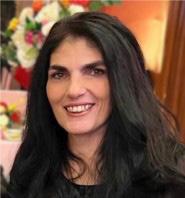

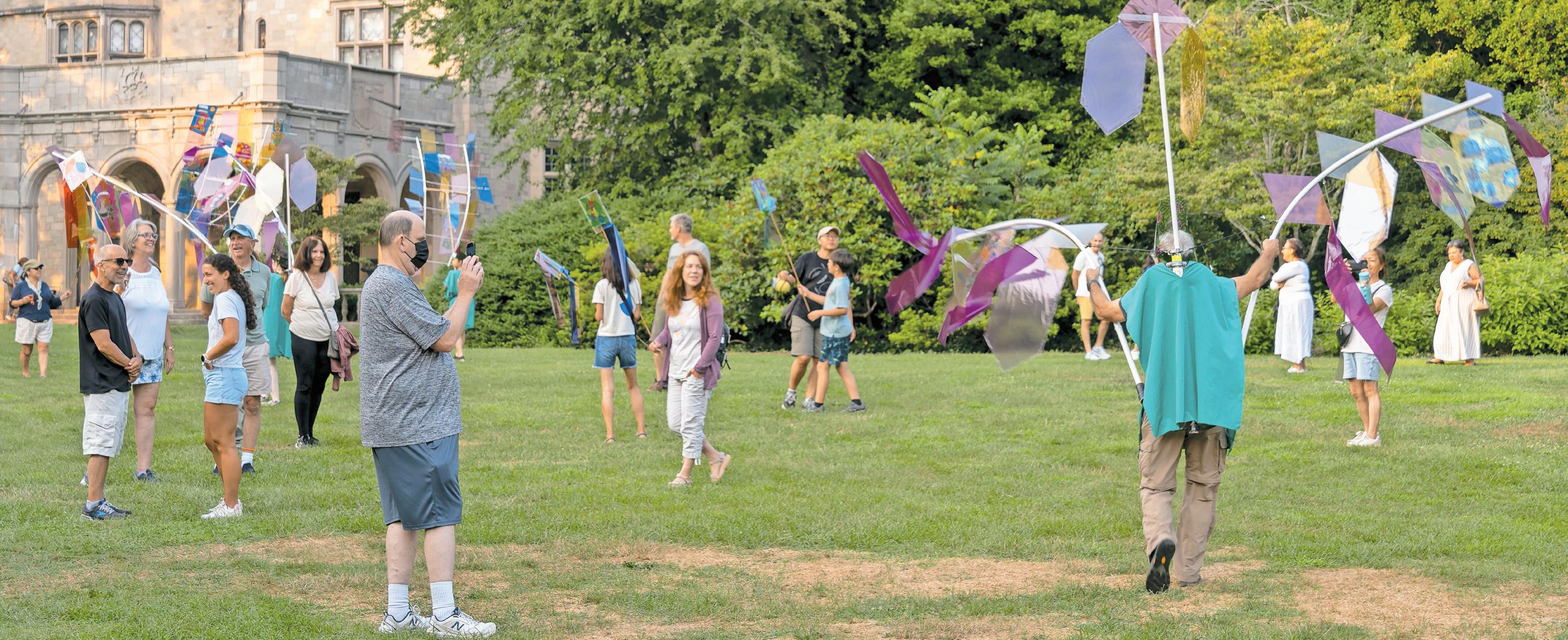
Dozens came out to help make art and carry it around the grounds at
Planting Fields Arboretum was the sight of fantastical art and giddy processions on July 27 during the culmination of the Planting Field Foundation’s Catalyst art program. Working with the arts group Processional Arts, artists of all ages got to help craft movable pieces from paper mache, decoupage and more which were paraded around the grounds.

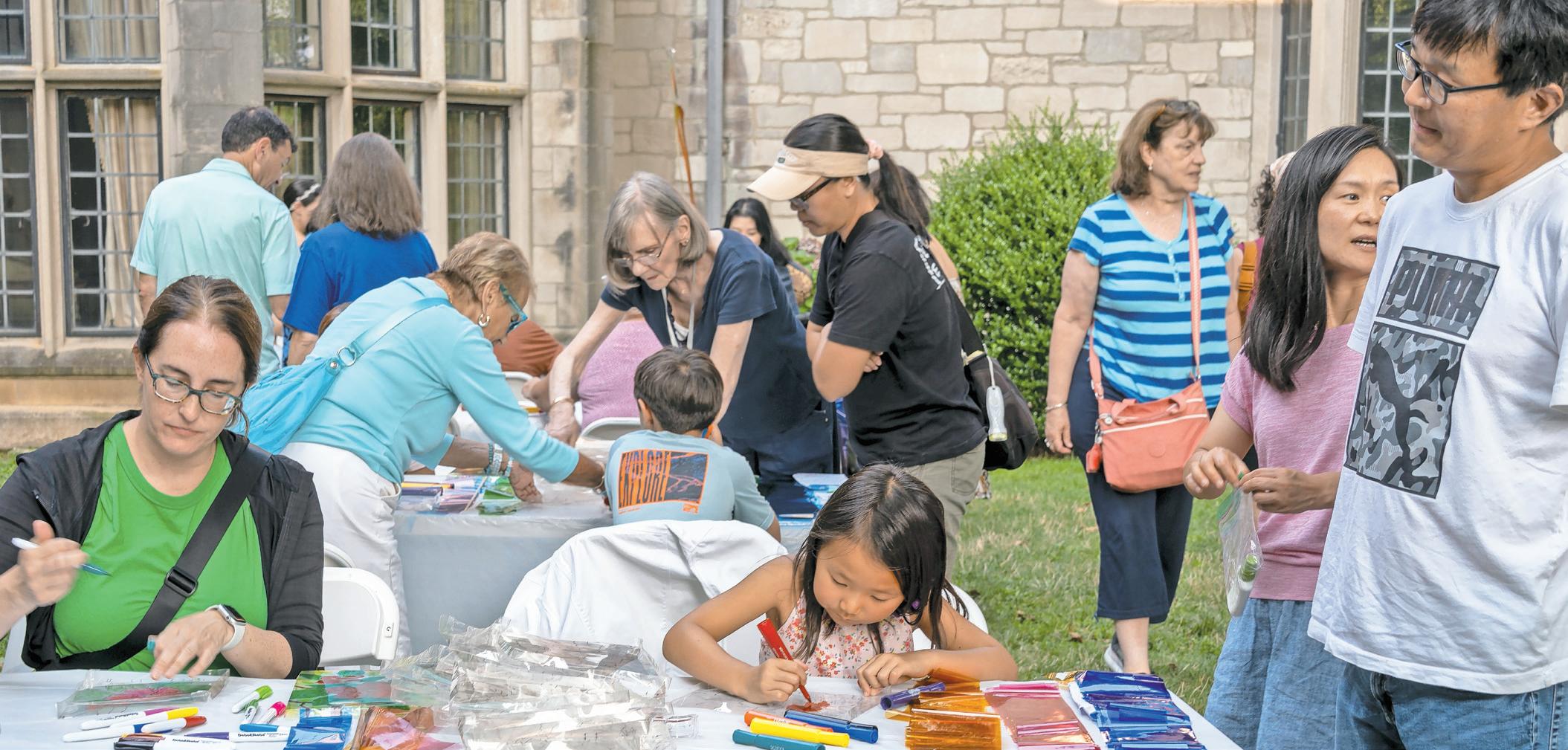

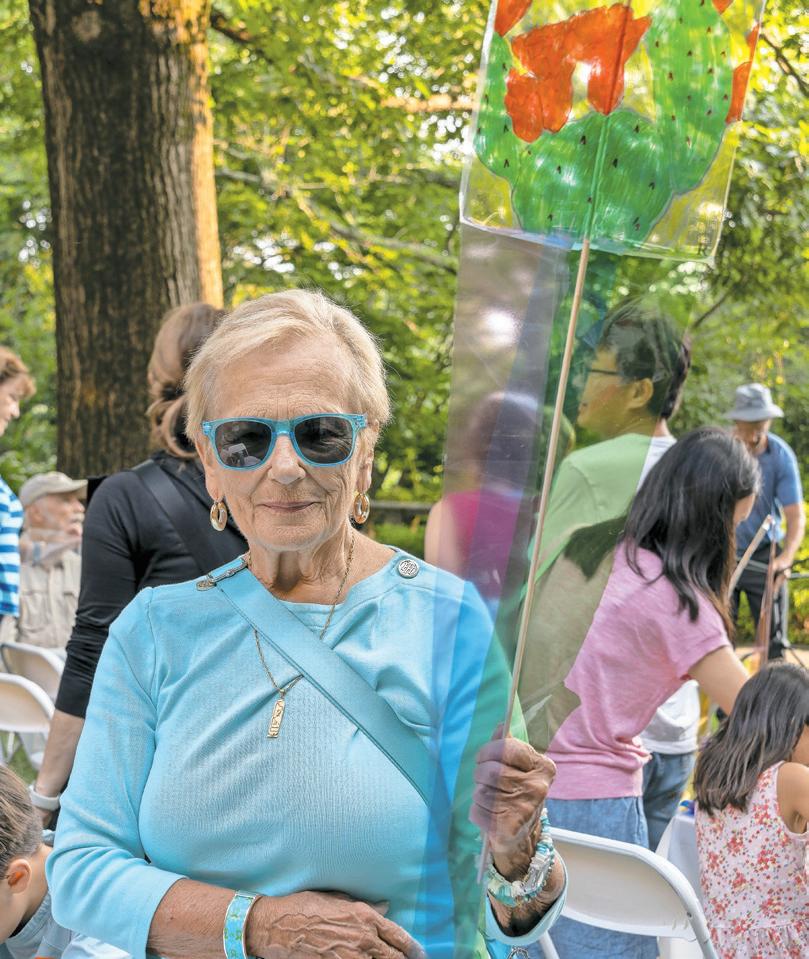




By ROKSANA AMID ramid@liherald.com
Human trafficking often relies on deception, manipulation, and force to keep those who are being exploited under the influence of the traffickers. People who become victims of human trafficking are often vulnerable — usually those without the necessary government or social supports needed to survive.
To help shed light on the issue, Susan Lingenfelter, secretary treasurer of Long Island Against Trafficking, delivered a powerful hour-long presentation on recognizing and combating sex trafficking on Long Island last Sunday at the Glen Cove Christian Church.
“I was always aware of sex trafficking, but after hearing this woman today, I am more scared,” one attendee, Jeff Forgione, said after Lingenfelter’s presentation. “This is everywhere. I’ve got a little granddaughter. Seeing this up close scares you more.”
Human trafficking is defined as the coercive control over individuals for exploitation, and it is the second-largest and fastest-growing criminal industry in the world, Lingenfelter explained. Victims are forced into labor or sex in exchange for money, and can be U.S. citizens or foreign nationals — men, women or children.
Trafficking occurs in a variety of settings, including the commercial sex
industry, which encompasses street prostitution, strip clubs, massage parlors, escort services and online forums. It can also take place in factories, farms, private homes, and service-industry locations such as nail salons and restaurants.
Hotels are frequent sites of human trafficking, Lingenfelter noted, and front desk workers are often bribed to overlook it. One out of every seven men in the United States, she added, have paid a prostitute for sex at least once.
Lingenfelter recounted an instance of trafficking in Suffolk County in 2016 in which Andrew Gayot padlocked a 15-year-old runaway and a 21-year-old woman in his home and forced them into prostitution. The older woman was held for over a year, and the teen was held for about four months.
This can happen next door, and you don’t even know
In 2017, the Global Slavery Index reported that 40.3 million people were enslaved worldwide, with some form of slavery existing in 167 countries. In the United States, 2.1 million people were trafficked, with an alarming 100,000 to 300,000 American children at risk annually. Ninety-four percent of victims in the U.S. were female, 75 percent were U.S. citizens and 41 percent were minors.
SUSAN LINGENFELTER Secretary treasurer, Long Island Against Trafficking
“This can happen next door, and you don’t even know,” Lingenfelter said. “Most victims know their traffickers. Thirty-six percent of traffickers are immediate family members. They look like us; they don’t walk around in a trench coat and a hat.
“If you suspect something, don’t try to be a hero,” she added. “Traffickers are scary people. Call the police.”
Victims, Lingenfelter explained, often exhibit signs of physical violence, multiple sexually transmitted diseases, tattoos or brands from an iron, or bruises. They are often homeless, or have an older, dominating male companion.
Traffickers, on the other hand, display controlling and violent behavior, are easily jealous, make promises to their victims that seem too good to be true, are often vague about their jobs, and encourage their victims to send them sexually explicit photos of themselves.
Staying safe from the threat of sex trafficking requires a combination of awareness, vigilance and practicality. Lingenfelter advised always being cautious about sharing personal information online; using different screen names in chat rooms, and avoiding posting
details that reveal your identity or location.
Traffickers are likely to lure their victims on social media by asking them to chat outside groups or chat rooms, offer vague solutions to financial problems with the promise of fast money, or blackmail victims with their nude or suggestive photos unless they follow demands.
Lingenfelter noted that children are trafficked by immediate family members in 36 percent of cases; by a parent’s boyfriend in 20 percent of cases; by family friends (14 percent); employers (14 percent) or strangers (9 percent).
“I thought this was very informative,” Tommy Lanham, the Glen Cove Christian Church pastor, said after the presentation. “Some of the statistics shocked me, especially the one about who would traffic a child. That is the statistic that shocks and hurts me. We’ve always heard and taught our kids to be on the lookout for strangers. This is telling me to be on the lookout for your immediate family — the ones who are supposed to be looking out for you. That’s a heavy statistic.”
Victims of human trafficking, and those who suspect instances of it, are encouraged to contact the National Human Trafficking Resource Center, at (888) 373-7888. They can also text HELP or INFO to BeFree at 233733, or e-mail NHTRC@PolarisProject.org.
Additional reporting by Tammy Lanham.

• Nutrition Counseling
• Individual and Family Health Education
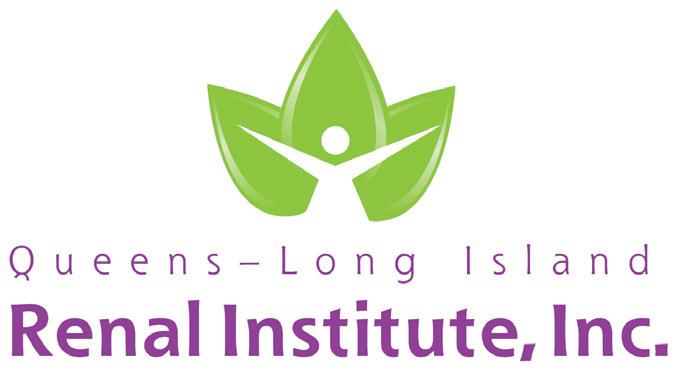
Stations
• Personal TV/DVD and Free Wireless Access
• Homelike Reception Area
• Stretcher Capability
• Valet Parking and Medical Transportation Available
• Quality Start
By ROKSANA AMID ramid@liherald.com
The long-delayed plan to launch a commuter ferry service from Glen Cove’s multimillion-dollar terminal has hit another roadblock, with city officials fearing a potential federal grant clawback that could severely impact local taxpayers.
Built in 2015 using $16.6 million in federal grants, the terminal has sat idle on the city’s waterfront for nearly a decade. According to the grant agreement, the city must operate a commuter ferry service to Manhattan for at least two years or face the possibility of repaying the entire grant. Despite various efforts, the service has yet to launch, raising the specter of a financial burden that could fall on Glen Cove residents.
In a City Council meeting on June 25, Mayor Pamela Panzenbeck removed a resolution to negotiate with New York Water Taxi for a two-month pilot program this fall. The decision came after RXR Realty, the developer of the adjacent $1 billion Garvies Point project, did not commit to help subsidize the ferry service.
Joseph Graziose Sr., RXR’s executive vice president of residential development, explained that the city could never guarantee that the ferry would be
operational without significant subsidies. In 2016, RXR agreed to subsidize its operation with up to $1 million, and in 2019 the developer provided $120,000 for consultant studies.
The city recently requested $250,000 from their subsidy agreement with RXR to run a pilot ferry service in September and October, using a 149-passenger vessel that would need to be filled to capacity each day for the service to break even, which RXR deemed unlikely.
Graziose believes the plan is unsustainable, and anticipates monthly losses of $125,000. The developer is willing to provide funding once losses are incurred, but does not support the upfront funding model the city has proposed.
G
of Transportation granted the city extensions for the start of the commuter ferry service. Panzenbeck said she has since reached out to potential ferry operators, and analyzed a variety of operations, routes and destinations in consultation with federal and state partners.
len Cove risks losing credibility for future grants if they don’t resolve this issue.
LARRY PENNER
An email from Panzenbeck’s office stated that since the ferryboat basin and terminal at Garvies Point Waterfront were completed, the city has maintained communication with federal, state and private partners, including RXR. In 2020, plans involving the ferry operator Hornblower were disrupted by the coronavirus pandemic, so the Federal Highway Administration and state Department
“RXR is required to subsidize ferry operations up to one million dollars, but has held firm that the City needs to incur an operating loss before a subsidy is provided,” Panzenbeck’s email reads. “The City disagrees with that interpretation of the development agreement and has required that RXR commit a subsidy amount upfront to fund the pilot service. As Mayor, I have a fiduciary responsibility to the City’s taxpayers and will not burden our residents with a ferry service without RXR’s subsidy already in place. For this reason, the ferry pilot for 2024 has been tabled by City Council.”
A ferry operated briefly in 2017, when Penn Station was undergoing repairs, but the boats ran at less than one-third capacity. In early 2020, the city signed a letter of intent with Hornblower Corp., a company that provided ferry service
in New York City, and developed ferry schedules and prices for service that was expected to begin that May, but it was put on indefinite hold when the pandemic began.
Glen Cove residents like Patty Tracy have expressed their frustration with the failure to get the ferry service up and running, noting that many voiced concerns about the project from its inception.
“The city ignored the information given to them and believed the developers’ promises,” Tracy said. “Someone should ensure this clawback does not increase taxes, because taxpayers did not want this.”
The stalled ferry effort has also raised questions about Glen Cove’s future relationship with federal grant agencies. According to former Federal Transportation Administration official Larry Penner, failing to fulfill the grant terms could jeopardize the city’s credibility and future funding opportunities. “Federal investments have a use-for-life clause, and not meeting these terms is unheard of,” Penner said. “Glen Cove risks losing credibility for future grants if they don’t resolve this issue. It’s unheard of, in my professional experience, that 21 years later, the federal agency didn’t get what they paid for. There’s no way the city of Glen Cove is going to be left off the hook.”
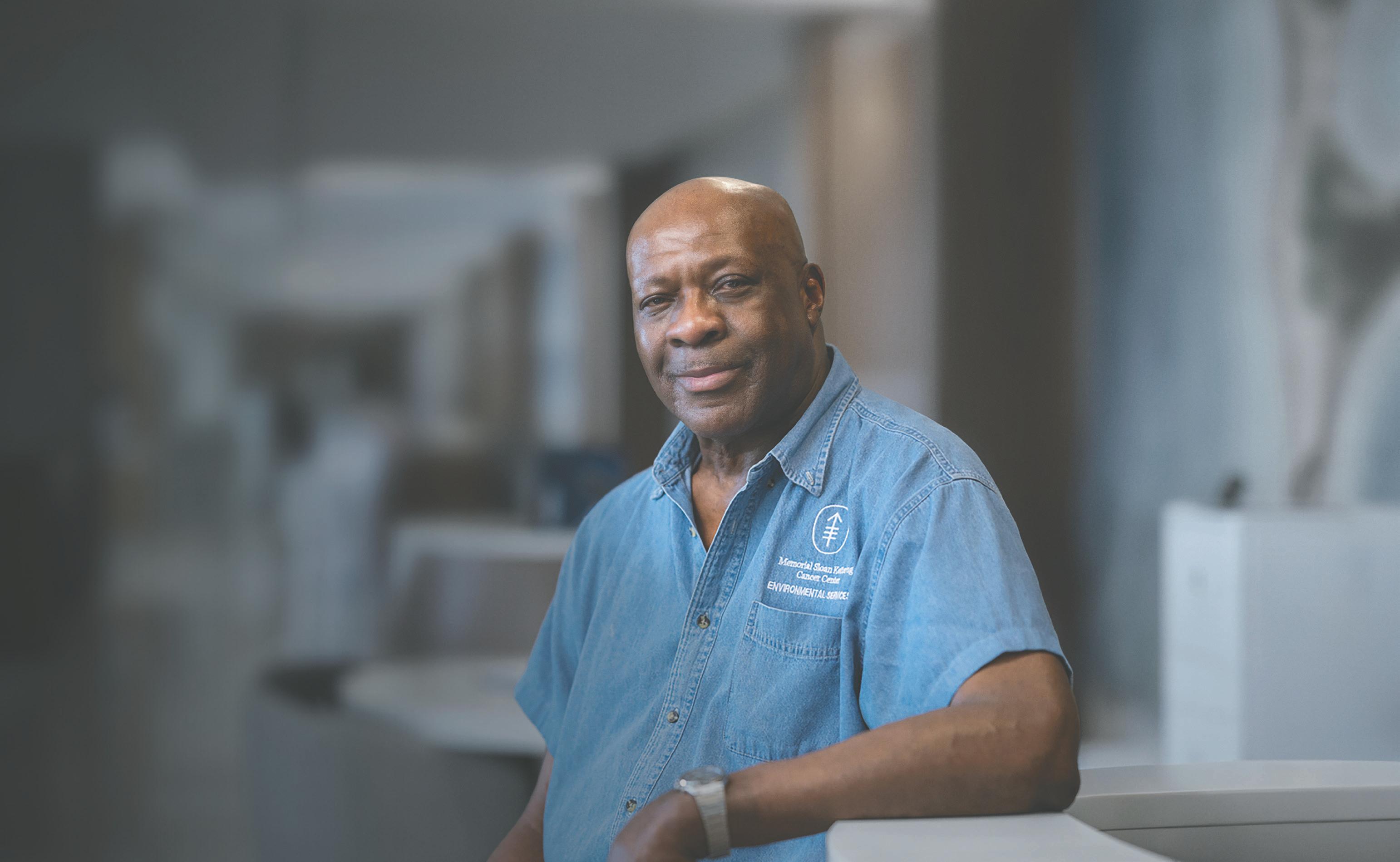
By JOSEPH D’ALESSANDRO jdalessandro@liherald.com
Law enforcement agents, state legislators and experts on human trafficking met at a conference at Nassau Community College on July 31.
The Assembly Minority Conference Task Force on Human Trafficking was created to help Nassau and Suffolk investigators, policy makers and safe houses share what they need to protect victims.
The Interagency Task Force on Human Trafficking — the state organization responsible for providing annual reports on the topic — is three years out of date, resulting in a critical lack of data since coronavirus lockdowns eased. Since then, organizations that help victims have strained to mitigate the harm done by human traffickers.
“It is a problem that is everywhere, but nobody is actually seeing it,” Assemblyman Brian Curran said.
The participants discussed state financial support, law enforcement tools, aid for exploited migrants, and educational programs to help New Yorkers recognize when someone is a victim of trafficking.
Attorneys and law enforcement personnel considered the effects of changes in trafficking-related charges — some are not officially “sex crimes,” so perpetrators don’t end up on the state’s Sex Offender Registry — and proving a victim was exploited is difficult for prosecutors, Christine Guida, deputy chief of the Nassau County Special Victims Bureau, explained.
The difficulty of bringing cases to trial can begin much earlier. Trafficking victims are often young — high school and college students — or struggle to communicate due to a language barrier. In virtually every case, they are threatened by traffickers not to come forward.
“People think that in order to do the unthinkable, there has to be some kind of torture involved,” defense
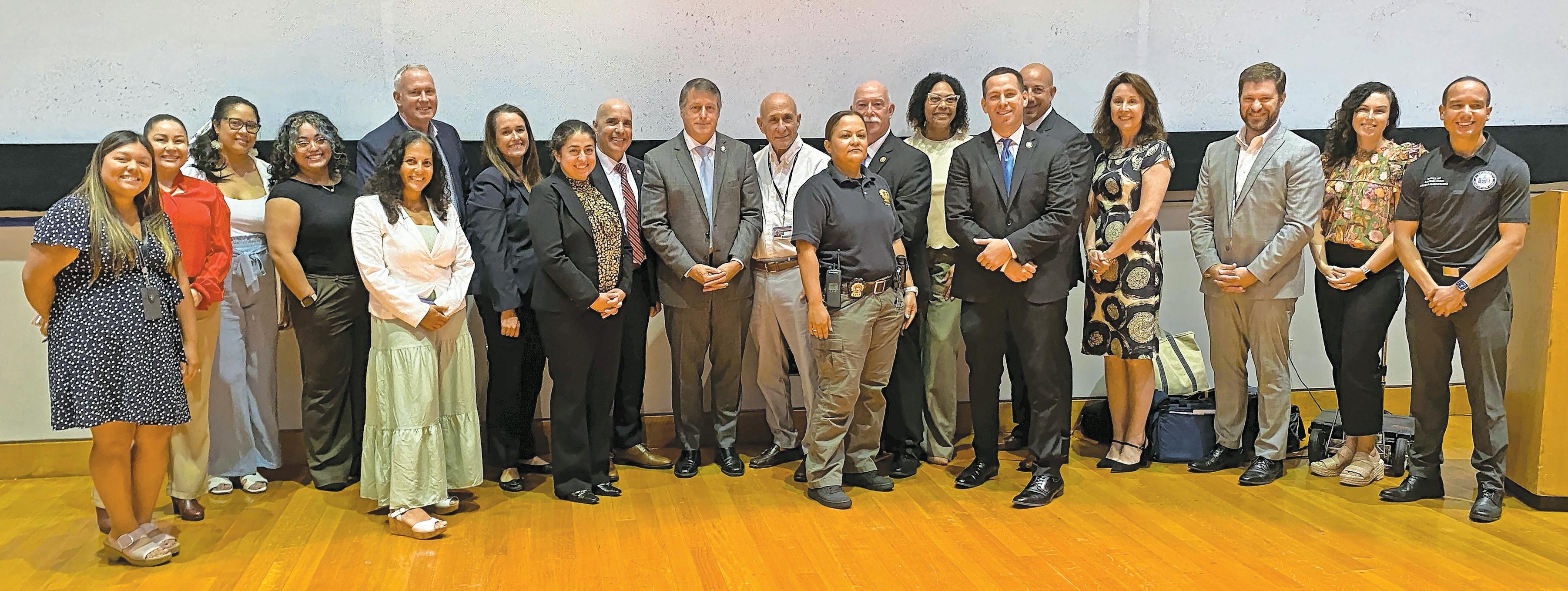
The task force is composed of local law enforcement, legislators and members of organizations that provide services to people in need, representing a range of groups that deal with different aspects of human trafficking.
attorney Diane Clarke said. “That’s not the case.”
The goal of training and education programs is to demystify what human trafficking is and how it works. Deepening the public’s understanding of trafficking can make tools such as simple hand signals for help increasingly viable for victims to escape their captors.
The Empower, Assist and Care Network is one of many organizations that provide housing, case management and other forms of aid to victims across Long Island and New York City.
“It is my hope that these conversations are going to continue in a way that is coordinating and enhancing our services, and advocating for funding,” said Neela Mukherjee Lockel, president and CEO of the EAC Network. “We’re going up against giant criminal enterpris-
es. That’s what human trafficking is, and we need money and resources to do that.”
Dr. Jeffrey L. Reynolds is president and CEO of the Family and Children’s Association, which has been providing shelter for runaway, homeless and trafficked children for over 140 years. It also has a mental health program that serves about 400 young people, in addition to programs for those suffering from addiction.
“We’re here today to make a couple suggestions about ways to improve systems of care,” Reynolds said. “This would include educating health and human service workers about how to spot the signs of trafficking, what to do about it, and how to intervene.”
The conference was the first step in renewing the fight against trafficking, Assemblyman Brian Maher said.



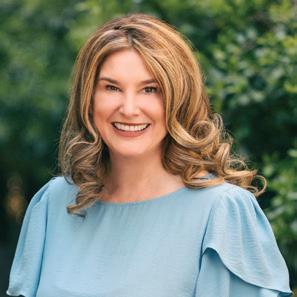
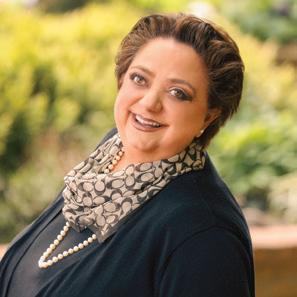

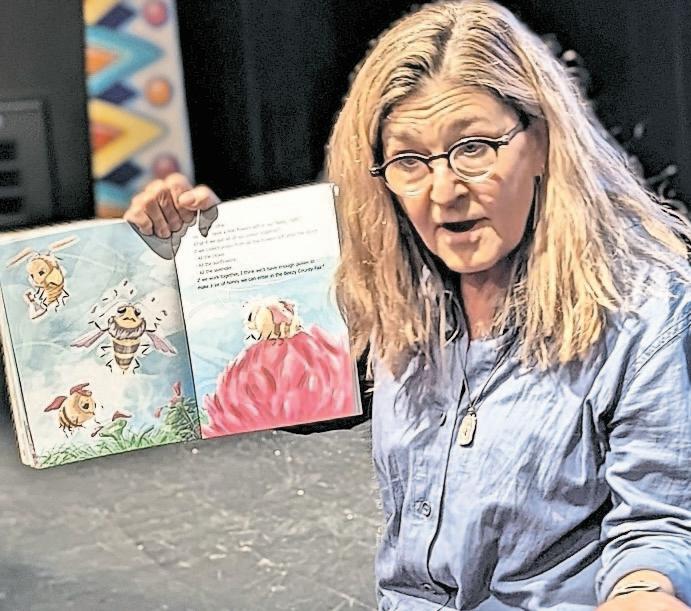


By Danielle Schwab





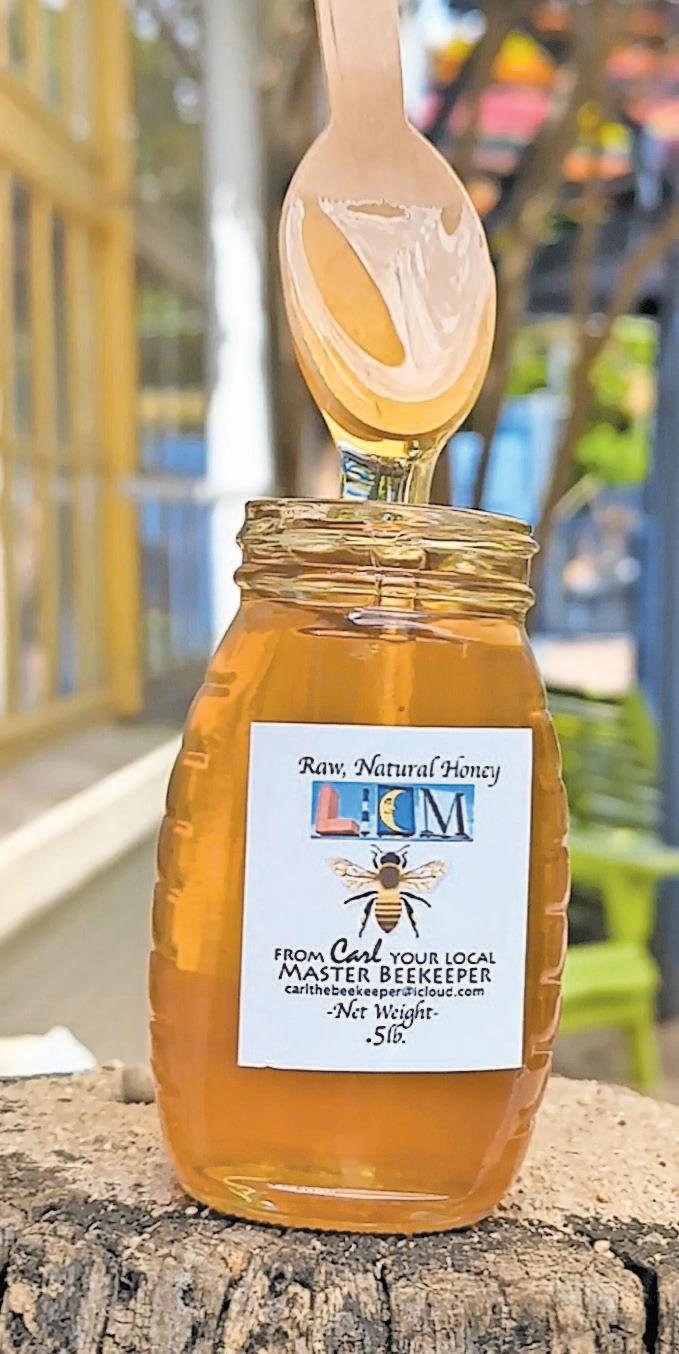
There’s a special “day” for everyone and everything it seems. So it’s certainly fitting that the helpful yet often misunderstood honey bee gets its due. And that brings us to Aug. 17, aka “National Honey Bee Day.” Long Island Children’s Museum goes all out to celebrate the hard-working insect with two days of “Honey Hoopla” activities, Aug. 16-17.
The museum has been home to over 20,000 honeybees year-round since 2012, when a hive was introduced to the Feast for Beasts exhibit, which opened in January of that year. The museum welcomed visitors to the first “Honey Hoopla” that year so that everyone could experience the first harvesting of honey from the then newly active hive.
Now Honey Hoopla returns — in a big way.
Families can check in on the busy bugs from an observational beehive, still located in the Feasts for Beasts exhibit. There, honeybees travel in and out of the hive, pollinating flowers in the museum’s pollinator garden and working together to create a productive thriving colony.
“They all have an important task to do, and they really stick to that role. And then, of course, there’s the queen, the leader of the hive,” says Ashley Niver, the museum’s director of education.
The fruit of their labors? Lots and lots of honey, of course Color, aroma, and taste can change based on the nectar of the flower. Families are welcome to taste many different varieties of honey, including, of course, from the museum’s honey harvest. And for those interested, the museum’s honey is available for purchase in the Museum Store.
“A lot of people maybe don’t know that honey can taste different from different varieties of flowers or the location. We’re offering different honey varieties that the kids can taste test and try to match up,” Niver says.
Bees certainly give us more than that sweet treat. Families become fully involved in exploring the role of honey bees in our ecosystem through hands-on activities.

• Friday and Saturday, Aug. 16-17, 11 a.m.- 4 p.m.)
• $17 museum admission, $16 seniors 65 and older
• View the LICM events calendar at licm.org for additional information or call (516) 224-5800
• Long Island Children’s Museum, Museum Row, Garden City
Visitors will learn that honeybees are responsible for pollinating some of Long Island’s most abundant crops including melons, pumpkins, tree nuts, and berries; and that the honey bee population is in danger and decreasing rapidly. Without these pollinators, we would lose some of our favorite foods such as chocolate, grapes, apples, and pears.
‘Families can also explore the use of honeycombs, from which wax is made. The “Happy Beeday” activity is an opportunity to make and decorate beeswax birthday candles.
“They’ll have a strip of colored beeswax and wicks they’ll wrap and roll up to create the candle, and then any scrap pieces of wax can be used to decorate it,” says Niver.
A local beekeeper will be on hand to demonstrate how honey is harvested from those honeycombs. In addition, kids can get involved in bee-themed crafts throughout the galleries that highlight how we can help the bees so that our fruit and vegetable crops can be healthy.
After some time buzzing around, visitors might want to take a break, with a free theatrical reading of Gay Thomas’ book, “Beezy County Fair: A Bee Tale,” at 11 a.m. and 12:30 p.m. The charming story engages families with adorable illustrations and an uplifting message about cooperation and the great benefits of working together for a common goal, along with plenty of bee facts.
While we understand that honey bees do so much for our environment, climate change and pesticides put the insects at risk of colony collapse disorder, where worker bees will exhibit abnormal behavior that leads to the destruction of the colony.
“They’re in danger of continuing to decrease due to different environmental factors,” Niver explains. “If we don’t have the bees here to help us pollinate, then we don’t have the abundance of crops that we can use for our food, and we’ll lose the success of our crop.”
To that end, the museum has launched its Name a Honey Bee Campaign so that visitors can join in bee preservation efforts. A donation of $10 allows families to name one of the museum’s bees, to be recognized on a visual display featuring the bee’s new name and the donor’s name through year’s end.
“It’s very easy for people to feel fearful of bees because they don’t want to be stung, and maybe they assume that all bees are looking to sting and cause harm,” Niver adds. “But the reality is that the honey bees are very docile, and they are just looking to make their honey. They’re really our friends.”
Photos courtesy LICMl
The industrious honey bee buzzes into the spotlight to captivate museum visitors. Participate in a theatrical reading and meet Gay Thomas, author of the “Beezy County Fair: A Bee Tale,” and explore an observational beehive during the event.

Gladys Knight Hop aboard that “Midnight Train to Georgia” when the legendary soul chanteuse brings her Farewell Tour to Flagstar at Westbury Music Fair. Gladys Knight is without a doubt one of the most influential, and beloved living singers on the planet. And while the Empress of Soul may have been in the business for more than 60 years now, that hasn’t stopped her from continuing to rock that beat as only she can do. She’s bringing her classic Motown-style R&B to fans one last time before she bids us farewell. The Rock and Roll Hall of Fame inductee’s fierce vocal power, elegant precision, and heartfelt performances have cemented her as one of music’s true icons. If you’re enjoy her classic Motown-style R&B, then you’ll surely want to see her perform — one more time. “That’s What Friends Are For,” “I Heard It Through the Grapevine,” — you know the hits, now hear her bring them to life once again.
Friday, Aug. 9, 8 p.m. Tickets start at $63. Tickets available at LiveNation. com. Flagstar at Westbury Music Fair, 960 Brush Hollow Rd., Westbury.

The iconic comedian Paula Poundstone is known for her smart, observational humor and a spontaneous wit that’s become the stuff of legend. When she isn’t collecting hotel soaps while on tour or panel-ing on NPR’s #1 show, “Wait, Wait...Don’t Tell Me!,” she hosts the popular Maximum Fun podcast, “Nobody Listens to Paula Poundstone.” “Nobody” is a comedy field guide to life, complete with taste tests, cats of the weeks and leading experts in everything from beekeeping to prosopagnosia. Her stand-up credentials are endless, along with numerous TV appearances. Her second book, “The Totally Unscientific Study Of The Search For Human Happiness,” in which she offers herself up as a guinea pig in a series of thoroughly unscientific experiments, was recognized a semi-finalist for the Thurber Prize for American Humor (the highest recognition of humor writing in the U.S.).
Friday, Aug. 9, 8 p.m. $55. $45, $35, $30, $25. The Paramount, 370 New York Ave., Huntington. Tickets available at Ticketmaster.com or ParamountNY.com.
The 1970s and ‘80s come alive when Double Vision brings their “Foreigner Experience” to the Paramount Stage, Saturday, Aug. 17, 8 p.m.


Enjoy a family film outdoors on Eisenhower Park’s big screen, Wednesday, Aug. 14, dusk, at the Harry Chapin Lakeside Theatre.
Drawing inspiration from Foreigner’s unmistakable sound and stage presence, Double Vision delivers a performance that pays homage to the band’s legacy while infusing their own charisma and enthusiasm. Their commitment to authenticity is matched only by their unwavering dedication to creating an electrifying experience for every audience member. With an impressive catalog of classics at their fingertips, Double Vision transports audiences to an era when arena rock ruled and Foreigner reigned supreme. Each show is a testament to their musical prowess, transporting fans to a time when anthems were born and memories were made. Sing along to some of the greatest hit tunes , including “Juke Box Hero,” “Hot Blooded,” “Cold As Ice,” “I Want To Know What Love Is,” “Urgent,” “Double Vision,” “Head Games,” “Feels Like the First Time,” and more. $60, $40, $25, $20. The Paramount, 370 New York Ave., Huntington. Tickets available at Ticketmaster.com or ParamountNY.com. Aug. 17
Whether you’re a lifelong Foreigner enthusiast or a newcomer eager to experience the magic of their music, Double Vision promises a night of electrifying entertainment that will leave you singing along and craving more. Composed of some New York City’s top professional rock musicians, the band delivers the highest level of integrity and technical prowess in bring audiences all the hits from the band that you’ve come to love, while honoring Foreigner and its audience, with a show second to none. The spirit of rock ‘n’ roll lives on, one unforgettable performance at a time, with this group of talented musicians and die-hard Foreigner fans. Double Vision has perfected the art of bringing to life the unforgettable hits that have defined generations. From “I Want to Know What Love Is” to “Cold as Ice,” their renditions are a harmonious blend of passion, precision, and nostalgic energy.
See Disney’s recent animated musical comedy “Wish.” Audiences are welcomed to the magical kingdom of Rosas, where Asha, a sharp-witted idealist, makes a wish so powerful that it is answered by a cosmic force, a little ball of boundless energy called Star. Together, Asha and Star confront a most formidable foe, the ruler of Rosas, King Magnifico, to save her community and prove that when the will of one courageous human connects with the magic of the stars, wondrous things can happen. Eisenhower Park, Lakeside Theatre, East Meadow. For information, visit NassauCountyNY.gov.
Meet former Food Network Executive Producer Karen Katz, Thursday Aug. 15, 7 p.m., at Theodore’s Books. She discusses and signs her new book, “Getting Sauced: How I Learned Everything I Know About Food From Working in TV.” This is event is free, but registration required. 17 Audrey Ave., Oyster Bay. Register at TheodoresBooks. com.
Drop by Bayville Free Library, Wednesdays, 1-4 p.m., for casual table games. Bring your own games or use games offered by the library such as; cards, Canasta, Mah Jongg, Scrabble, chess, checkers, backgammon, and jigsaw puzzles. No registration required. 34 School St. For more information, visit BayvilleFreeLibrary.org or call (516) 628-2765.
The Oyster Bay Main Street Association hosts its 13th season of “Dancing in the Street,” an annual series of free dance evenings on the streets of historic downtown Oyster Bay. Building on the success of previous years, OBMSA welcomes dancers of all ages and skill levels. “Dancing” continues every Friday until Aug. 16, 6:30-:30 p.m.
The fun happens on Audrey Avenue around the Bandstand. Use 74 Audrey Avenue for GPS. Feel free to bring a chair if desired. With special “Dancing in the Street Block Party” will be held on Aug 2. And Audrey Avenue will be shut down to make way for activities, music, food, and drinks. For more information contact Diane J. Meltzer, Promotion Chair, at diane.writes4@gmail.com.









Bring the kids to Old Westbury Gardens for a Seasonal Sprouts session, Wednesday, Aug. 21, 11 a.m.-noon. Children (ages 4 to 6) can tour the gardens with guided activities exploring smells, sight, sound, and touch, even taste in planting a tasty veggie. $8 per child, $15 adult. Registration required. Old Westbury Gardens, 71 Old Westbury Rd., Old Westbury. For information, visit OldWestburyGardens.org or contact (516) 333-0048.
Oyster Bay High School Class of 1974 celebrates its 50year reunion at Seawanhaka Yacht Club, on Centre Island, Saturday, Sept. 21, 6-10 p.m. Everyone is encouraged to attend. 314 Yacht Club Road. For more information, visit obhs1974reunion.rsvp-com.

Enjoy a tribute to ‘70s radio hits with 45 RPM, at Eisenhower Park, Friday, Aug. 9, 8 p.m. The New York City-based band of vocalists and musicians recreates the songs and their era with the C’mon Get Happy show, an entertaining and visually engaging evening that has you singing and dancing along. It’s a whole night of “wow, I remember that one” moments. Get “hooked on a feeling” with 45 RPM. Bring seating Harry Chapin Lakeside Theatre, Eisenhower Park, East Meadow. For information, visit NassauCountyNY.gov.
Glen Cove BID presents its annual Downtown sounds concert series through Aug. 30, at Village Square in downtown Glen Cove. The shows begin at 7:30 p.m. Rolling Stones tribute band Let It Bleed performs on Friday, Aug. 9. For more information visit: GlencCoveDowntown.org.
Keep cool while you are serenaded under the stars by the Glenn Miller Orchestra on the Morgan Park stage, Sunday, Aug. 11, 7 p.m., The orchestra featured is the only musical ensemble licensed to use the name, the Glenn Miller Orchestra.
Complex harmonies, syncopated rhythms, smooth instrumental and vocal solos resound throughout the great classics to be performed such as “Chattanooga ChooChoo” “The White Cliffs of Dover,” “Moonlight Serenade, “Jukebox Saturday Night,” and so many more great hits of the ‘30s and ‘40s.s. Appearing with the orchestra are music director/tenor saxophonist Eric Stabnau and vocalist Jenny Swoish.
Morgan Park Summer Music Festival is celebrating its 65th anniversary year of bringing free concerts to the community. All concerts are held at Morgan Memorial Park in Glen Cove, overlooking Hempstead Harbor at Germaine Street between Landing Road and McLoughlin St.
Items on The Scene page are listed free of charge. The Herald welcomes listings of upcoming events, community meetings and items of public interest. All submissions should include date, time and location of the event, cost, and a contact name and phone number. Submissions can be emailed to thescene@liherald.com.
Nassau County Museum of Art ‘s latest exhibition

“Seeing Red: Renoir to Warhol,” reveals the many meanings, connotations, and associations of this powerful color in art. Evoking strong emotion, red can represent the human condition. Its myriad variations have come to signify authority as well as love, energy and beauty. Red warns us of peril and commands us to stop, but it can also indicate purity and good fortune. Red boldly represents political movements and religious identities. From the advent of our appreciation for this color in antiquity to its continued prominence in artistic and popular culture, this exhibition will span various world cultures through a range of media. It features more than 70 artists, both established and emerging, ranging from the classical to the contemporary. American portraitists such as Gilbert Stuart imbued red in their stately paintings of prominent individuals to conjure authority. Robert Motherwell, Ad Reinhardt, and other major abstract painters displayed a deep fascination with red in their commanding compositions that evoke a sense of chromatic power. And, of course, Andy Warhol is known for his bold and imposing silkscreened portrait of Vladimir Lenin saturated in bright red to his signature Campbell’s Soup Cans. On view through Jan. 5 Nassau County Museum of Art, 1 Museum Dr., Roslyn Harbor. (516) 484-9337 or NassauMuseum.org.
Get in on the action with I.FLY Trapeze, Long Island’s only flying trapeze and circus arts school. Families will enjoy “Wild West Circus,” Saturday, Aug. 17, at 8 p.m., at Eisenhower Park. I.FLY Trapeze puts spectators up close to the aerialists who perform amazing feats of athleticism and agility 25 feet in the air. Performances include Chains, Silk and Lyra, with comedy and on the grounds acts with Balancing and Baton, also a Flying Trapeze Finale. Next to the Nassau County Aquatic Center off Merrick Ave., East Meadow. Free parking available in lot 1A adjacent to the trapeze. For more information, visit IFlyTrapeze.com.
Visit Deep Roots Farmers Market , Saturdays from 9 a.m. to 1 p.m.., through Nov. 19, at Garvies Point Park. Choose among all sorts of delectable goodies. The market offers locally grown vegetables, farm fresh eggs, meats and dairy, fresh baked breads and pastries, artisan cheeses, fresh seafood, local honey, prepared foods, pastas, jams, coffees, and more.



































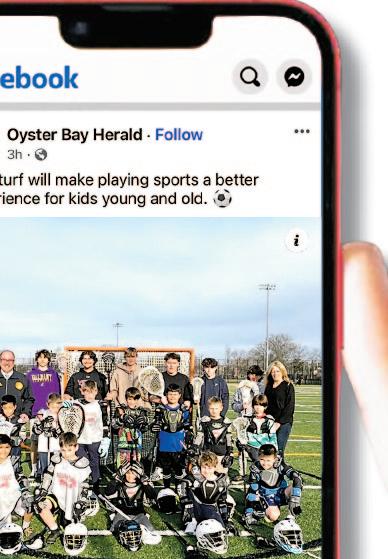




By JORDAN VALLONE jvallone@liherald.com
This November, voters in New York will have the opportunity to vote on an amendment to the state’s constitution, aimed at ensuring equal rights to all under law.
The current equal protection clause in the state’s constitution already prohibits discrimination based on “race, color, creed or religion.” The amendment will allow New York voters to include additional classifications that people cannot be discriminated against, such as ethnicity, national origin, age, disability, sex, pregnancy and pregnancy outcomes, sexual orientation, and gender identity.
The decision to include the amendment on this year’s ballot came in midJune. New York’s Attorney General Letitia James said it was “a huge victory in our efforts to protect our basics rights and freedoms.”
“The ERA was advanced to protect access to abortion care, enshrine this basic right in our constitution, and protect people from discrimination,” she said. “We will continue to do everything in our power to protect these rights and ensure everyone can live safely and freely in the great State of New York.”
Advocacy groups at both the state and local level are beginning to spread the word about what the amendment entails. The League of Women Voters of Central Nassau recently held an “Appetizer & Postcard Party,” aimed at educating neighbors on what the ERA is.
The League of Women Voters is a nonpartisan, grassroots organization working to protect and expand voting rights. It empowers voters and defends democracy through advocacy, education, and litigation at various levels of government, and there are several chapters on Long Island.
Wdon’t forget to ‘flip the ballot’ and vote on the new NY ERA for all New Yorkers.”
The event was successful, and 500 postcards were written.
Cushman, a professor at Nassau Community College, where she teaches English and women’s and gender studies, said the amendment is not an abortion access measure.
Susan Cushman, the advocacy chair for the Central Nassau division, said the idea was to bring people together at the Appetizer & Postcard Party, so the community and members of the league could learn about the amendment, and if they support it, write postcards that were mailed to addresses, provided by New Yorkers for Equal Rights, a coalition that supports the amendment.
At the event, which took place at the Baldwin Diner last month, attendees wrote on their postcards: “On Nov. 5,
“Pregnancy outcomes suggests that if women have unexpected issues or problems with their pregnancy, they’re not going to be criminalized for it,” she said. “They have access to services that include protecting their future fertility. That’s really important for people to understand.”
Cushman said she feels people are supportive to the amendment, once they learn what it entails. But, she added, that is the problem — not many people even know about it. Several new people joined the league at its last meeting, Cushman said, it served an important educational purpose for other attendees.
“I do think people are receptive to it,” Cushman said of the amendment, “and I agree that people generally don’t know
a lot about it. They think we already have a New York ERA, and that’s enough.
“We want to take action, we want to spread the word — and that’s why we thought the postcard party would be such a great idea,” she went on. “We could put it on our website, or we could email people, but it doesn’t bring a community together.”
On November’s ballot, the amendment will be the first proposal on the ballot, labeled as Prop 1. The current ERA, Cushman said, does not cover the full scope that the new one would, if approved by voters in November.
“That’s why when I try to explain it to people, it’s a pro-health care measure,” she said. “It’s not just about women in pregnancy outcomes — it also protects your discrimination in these other areas, like age, ability, LGBT issues. It’s the 21st century. It’s time to have a stronger New York Equal Rights Amendment.”
Voters interested in learning more about the Equal Rights Amendment, the League of Women Voters of East Nassau will hold a meeting on Aug. 21 at 7 p.m. at the Levittown Public Library. The library is at 1 Bluegrass Lane, Levittown. For more about the league, and to find local chapters, visit LWV.org.















































Northwell Health announced that seven of its hospitals have been recognized for their outstanding quality of care in the 2024 Five-Star Quality Rating System by the Centers for Medicare and Medicaid Service. Among the 2,267 hospitals evaluated, Northwell hospitals have secured four-star or better ratings, placing them among the best in the nation.
Glen Cove Hospital, Mather Hospital in Port Jefferson, and Northern Westchester Hospital in Mount Kisco achieved five-star ratings, the highest possible. Huntington Hospital, Lenox Hill Hospital in Manhattan, North Shore University Hospital in Manhasset, and South Shore University Hospital in Bay Shore received four-star ratings.
“These achievements are especially gratifying because of what it means for our community: access to quality care that is among the best in the nation,” said Michael Dowling, Northwell’s president and CEO.
The CMS rating system, which began in 2007, evaluates hospitals on 49 different metrics, including mortality, safety of care, rate of readmission, patient experience, and timely and effective care. In 2024, Northwell Health saw 83 percent of its hospitals either advance or maintain their star ratings. Despite a national increase in hospital-acquired infection rates, Northwell hospitals have
successfully reduced these rates over the past two years, receiving recognition from CMS for their efforts.
“These outstanding survey results reflect our commitment to providing the highest quality and safest care to our patients and communities,” said Dr. Peter Silver, senior vice president and chief quality officer at Northwell. “We continue to strive for excellence in all aspects of patient care.”
Achieving a five-star rating for the second consecutive year, Mather Hospital is recognized by Healthgrades as one of “America’s 250 Best Hospitals for 2024,” placing it in the top 5 percent nationwide for clinical performance. Glen Cove Hospital earned a five-star rating for the first time, noted for its exceptional patient outcomes, safety, and satisfaction, with reduced readmission rates and low mortality contributing to its top rating.
These CMS ratings follow Northwell Health’s strong performance in the U.S. News & World Report’s Best Hospitals 2024-2025 list, where Northwell hospitals earned top 50 national rankings in 30 medical specialties. Northwell Health continues to set high standards in healthcare, ensuring top-quality care for its patients and communities across New York State.
Dear Great Book Guru, Summer 2024 is moving along so rapidly and I’m falling far behind in my quest to read a good book each week. Please help me – I need a quick moving, interest-catching novel – doesn’t have to be new … Summer Reader
Dear Summer Reader, Lots of us see summer as the best time of year to catch up on books we might have missed, and for me it was Tom Perrotta’s THE LEFTOVERS. Made into a long running TV series, the novel has been on my must-read list for years so last week I tackled it and am happy I did. I’m sure you will enjoy it too.
lies in one village - perhaps a bit reminiscent of Sea Cliff!

ANN DIPIETRO
The premise of both the book and TV series is that three years in the past on October 14, over a million people of all ages disappeared from all parts of the world - a Rapture of sorts. The novel focuses on the aftermath of this climatic moment and its effects on fami-
NOSH Delivers, a food pantry and delivery service, has moved to the VFW Hall at 15 Hill Street, Glen Cove. The organization, which serves over 600 families each week, expressed gratitude to Peter and Liz Holzer for hosting them at their previous location for the past two years.
Christine Rice, chairwoman of Nosh, emphasized the urgent need for food donations, especially during the summer months when children miss school-provided meals. Nonperishable food donations and monetary contributions, which enable the purchase of nutritious items like eggs and fresh produce, are particularly needed.
Founded in March 2020 to address food insecurity exacerbated by the COVID-19 pandemic, Nosh delivers weekly NOSHBags containing gro -

LEGAL NOTICE
Kevin Garvey the new mayor and his two children, Tom and Jill, are dealing with a loss – his wife Laurie has left them to join a group seeking to make amends for the sins of those left behind - the Guilty Remnant. Another villager, Nora Durst, has lost both husband and children to the Rapture and she finds herself unable to move on - especially when secrets are revealed about the past. Holy Wayne is a local figure who has founded a religion to make sense of who and what remains. As each of the characters struggles to find meaning in this occurrence, we see glimmers of our own quests to explain the unexplainable. A thought-provoking book and highly recommended!
Would you like to ask the Great Book Guru for a book suggestion? Contact her at annmdipietro@gmail.com.
ceries for two meals for a family of four. They serve homes in Bayville, Glen Cove, Roslyn, Locust Valley, and Sea Cliff, and welcome walk-in recipients at the VFW Hall. To date, NOSH has provided groceries for more than a half-million meals.
Donations can be brought to Nosh on Mondays, Tuesdays, Thursdays, and Fridays from 9 a.m. to 1 p.m., Tuesdays from 5 p.m. to 7 p.m., and every other Saturday from 9:30 a.m. to noon. Monetary donations can be made online at noshdelivers. org/donate or by mailing checks to NOSH, P.O. Box 99, Sea Cliff, NY 11579. As a 501c3 not-for-profit organization, all contributions are taxdeductible. For more information, visit www.noshdelivers.org or call the hotline at (516) 366-0277.
PUBLIC NOTICE: INC. VILLAGE OF LAUREL HOLLOW - PLANNING BOARD
NOTICE IS HEREBY GIVEN, that a public meeting and hearing will be held by and before the Planning Board of the Inc. Village of Laurel Hollow, Nassau County, New York, on Tuesday August 20, 2024, at 7:00 P.M. at the Village Hall located at 1492 Laurel Hollow Road, Laurel Hollow, NY to consider the following: “P4-2023 and T10-2023
Public hearing on the application of Marc Koslovsky of 45 Stillwell Lane to remove 24 trees from his property in connection with building permit #3440 to regrade the backyard, add retaining walls with waterfall feature and patio with leveled grass area. This parcel of land is known as Section 14, Block A, Lot 1101 on the Land and Tax Map of Nassau County.
“PS-3-2023 Public hearing on the application of Marc Koslovsky of 45 Stillwell Lane to disturb steep slope and severely steep slope areas in connection with building permit #3440 to regrade the backyard, add retaining walls with waterfall feature and patio with leveled grass area as shown on the on the plans submitted by Gregory Sachs P.E. This property is designated as Section 14, Block A, Lot 1101 on the Land and Tax Map of Nassau County. All relevant documents submitted in connection with this application are on file at the Village
Clerk’s Office in the Village Hall. If you wish to inspect the documents, please email the Deputy Clerk at Deputy@laurelhollow.org in advance of the meeting to make arrangements. All persons interested will be given an opportunity to be heard at said time and place. By Order of the Planning Board Christopher Hadjandreas, Chairman August 1,2024 148387
LEGAL NOTICE
OYSTER BAY-EAST NORWICH CENTRAL SCHOOL DISTRICT
1 McCouns Lane Oyster Bay, New York 11771
NOTICE TO BIDDERS
The Oyster Bay-East Norwich Central School District, in accordance with Section 103 of Article 5-A of the General Municipal Law, hereby invites the submission of sealed bids from reputable and qualified contractors for the provision of labor and materials for the following contracts in the schools of the School District: DRIVER’S EDUCATION INCAR INSTRUCTION
Bid Opening: August 14, 2024 at 10:00 am Bids for Professional Driver Education Road Instruction for the term of September 1, 2024 through June 30, 2025 (Official school calendar will be provided) will be received until the above stated hour of prevailing time and date at the School District Business’s Office, 1 McCouns Lane, Oyster Bay, New York
11771, at which time and place all bids will be publicly opened. Specifications and bid forms may be obtained at the District Business’s Office, located at 1 McCouns Lane, Oyster Bay, New York 11771 between the hours of 9:00 am and 3:00 pm, Monday through Friday, excluding holidays, beginning on August 7, 2024.
Bids must be presented on the standard proposal form in the manner designated therein and as required by the Specifications. All bids must be enclosed in sealed envelopes which are clearly marked on the outside: Bid For: “Oyster Bay-East Norwich Central School District - Driver’s Education In-Car Instruction”. Bids shall remain firm for a period of forty-five (45) days following the date of the bid opening.
The Board of Education reserves the right to waive any informalities in or to reject any or all bids, or to accept that bid which, in the Board of Education’s judgment, is in the best interest of the School District.
The Board of Education reserves the right to consider experience, service and reputation in the above-referenced fields. In addition, the Board of Education reserves the right to consider the financial responsibility and specific qualifications, as set out herein, of the prospective bidder in its evaluation of the bids and award of the contracts.
Oyster Bay-East Norwich Central School District
McCouns Lane
Oyster Bay, New York
11771
Zachary Nyberg, Purchasing Agent 148286
To place a notice here call us at 516-569-4000 x232 or send an email to: legalnotices@liherald.com
LEGAL NOTICE
PUBLIC NOTICE
JERICHO WATER DISTRICT PUBLIC HEARING ON THE PROPOSED REVENUES AND EXPENSES FOR 2025 NOTICE IS HEREBY GIVEN that, pursuant to Town Law §215, a public hearing will be held at District Headquarters located at 125 Convent Road, Syosset, Long Island, New York, on Thursday, September 5, 2024 at 9:00 am for the purpose of conducting a hearing on the proposed revenues and expenditures of the District for the 2025 fiscal year. A copy of the proposed revenue and expenditures will be made available to the public at District headquarters prior to the hearing date. NOTICE OF PUBLIC MEETING
A public meeting will also be held at the time and place noticed above wherein the District will conduct such regular and other business which is properly brought before the Board of Commissioners. By Order of the Board of Water Commissioners of the Jericho Water District. JAMES ASMUS Secretary Dated: Syosset, New York
August 9, 2024 148362







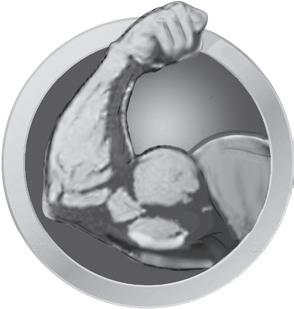












The attempted assassination of former President Donald Trump once again brought attention to an issue that is important to all of us, regardless of our political affiliation: public safety. We’re all grateful that the attempt failed, but the fact that an apparently ordinary citizen so easily got hold of an assault-style rifle and was able to come within inches of incapacitating or killing a former president is frightening.
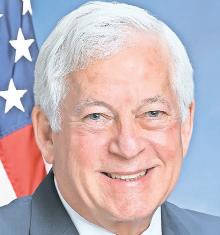
The investigation into exactly what happened during that rally in Butler, Pennsylvania, and what measures will need to be taken to make sure it doesn’t happen again, will take months, if not years. The issue of protecting our fellow New Yorkers, however, is something Gov. Kathy Hochul must deal with on a daily basis.
Building on significant progress made in 2023, Hochul recently visited Glen Cove and announced new statistics reflecting the effectiveness of her leadership on the issue of public safety:
■ A 44 percent drop in shooting incidents with injury on Long Island in the
Ifirst six months of 2024, and a 27 percent decrease statewide during the same period the year before.
■ A 15 percent reduction in total index crimes, a 4 percent reduction in violent crime and 16 percent reduction in property crime on Long Island, while the statewide average was a 9 percent reduction.
■ A 17 percent decline in larcenies, and a 14 percent decrease in motor vehicle thefts.
FWhile those numbers are encouraging, Hochul, along with my colleagues in the State Legislature, are committing the financial resources to ensure that we continue to build on that progress. At that same event, she announced the investment of more than $50 million in public safety in Nassau and Suffolk Counties, the largest such state investment ever, which was included in this year’s state budget. It includes $1.1 million for the Glen Cove Police Department for the purchase of law enforcement technology and equipment to allow it to be able to solve, reduce and prevent crime more effectively.
benefit for all New Yorkers. They include funding to crack down on organized retail theft, combat the rising tide of hate crimes, make targeted investments in communities to prevent gun violence and domestic violence, and reduce recidivism and improve re-entry for formerly incarcerated people across the state.
rom her first days in office, Kathy Hochul has been committed to fighting crime.
The 2025 fiscal year state budget includes:
■ $80 million to offset the costs of discovery reform implementation and pretrial procedure changes in all 62 counties. Nassau County received roughly $3.6 million, and Suffolk County, roughly $4 million.
■ $59.46 million in aid to prosecution funding for the state’s 62 district attorneys’ offices. Nassau County received nearly $3 million, and Suffolk, about $3.3 million.
■ Nearly $36 million for the Gun Involved Violence Elimination Initiative to support personnel, overtime, equipment and technology in 21 counties outside New York City (including Nassau and Suffolk) that participate.
nities Against Hate grant to protect houses of worship, religious schools and other at-risk sites, plus the addition of 28 hate-crime eligible offenses.
■ $40.8 million to reduce domestic violence and support victims of domestic violence.
■ $7.1 million to reduce recidivism and improve re-entry into the workforce for parolees.
■ $40.2 million for dedicated retail theft teams in the state police, district attorneys’ offices and local law enforcement, and a $5 million tax credit to help small businesses invest in added security measures such as cameras.
In addition, a new law establishes deed theft as a crime and expands the statute of limitations for it to five years after the commission of a crime or two years after a homeowner becomes aware of the theft, whichever is later.
While this local investment is great news for the city and the surrounding area, the overall commitment to public safety and the multifaceted methods of crime prevention in the 2025 budget are a
■ $20 million in pretrial services in the 57 counties outside New York City. Nassau County received nearly $1.8 million, and Suffolk, just over $2 million.
■ $35 million for the Securing Commu-
From her first days in office, Hochul has shown a commitment to fighting crime. While the promising statistics cited above show her efforts are paying off, the investments made in the budget by her, and my, legislative colleagues on both the state and local levels show that, working together, we are only getting started in our efforts to keep New Yorkers safe.
Charles Lavine represents the 13th Assembly District.
n a world where news breaks instantly on our phones, cracking the world open in an instant, behold the weekly newspaper, the tortoise of the news business. As I write, I realize it’s not all bad to have time to think between 72-point headlines.
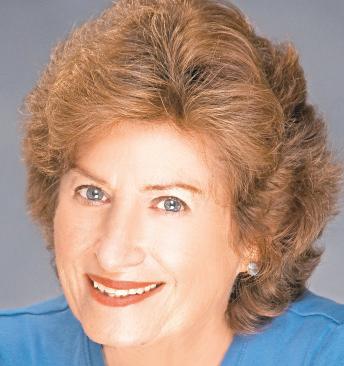
When I wrote last, almost a month ago, President Biden was still the presumptive Democratic nominee, although there was plenty of chatter about his slow walk and whispery talk. He was adamant: He would not step down. He was ready to fight. Many of us who think Biden has done an outstanding job in office came to believe he was not up to another four years. He looked frail. He appeared to overestimate his ability, at age 81, to meet the demands of the job. It felt disloyal to urge him to make way for a younger contender, but loyalty to our democracy had to come first. I celebrated his willingness to relinquish power, wished it had come sooner, but we had a potential new candidate.
Three weeks ago, Kamala Harris was (and still is) the vice president, and at that point her own presidential dreams were on hold. Donald Trump was salivating like a lion at the Roman Forum, waiting to take on Biden in the next debate. After the president’s shockingly poor performance in the first one, the Donald was closing in for the kill.
J.D. Vance? Barely a twinkle in Trump’s eye a month ago. He’s the guy who wrote “Hillbilly Elegy.” Suddenly he morphed into a megaMAGA, with extreme, creepy ideas about women’s rights and personal freedoms. Trump thought Vance would make a perfect addition to the ticket.
That was July 13. Then, curtains up on the Republican National Convention, just days after the attempted assassination, with a buoyant Trump telling the world he was still standing.
I hope all the disparate political identities will form a cohesive movement.
A few weeks back, Thomas Matthew Crooks was a shy kid from rural Pennsylvania who got it into his head to kill the former president. And he nearly did, grazing Trump’s ear as he stood at the podium at an outdoor rally. I saw it happen, and time stopped until Trump was hustled to safety. I lived through the years of JFK, MLK and RFK dying in heartbreaking eruptions of political violence. Those murders scarred the political landscape forever.
Those were enough big news items for five years, compressed and pounded under pressure into just days, until the whole country, burnished like a diamond, seemed brilliant and raw. You could hear us, an entire nation, sucking in deep calming breaths, trying to steady ourselves.
Then, on July 21, Biden announced that he was stepping out of the presidential campaign and endorsing Harris to be the Democratic nominee.
I’m writing this all down because after some amount of time, nobody will believe that it all happened just like this over the past few weeks.
Then the head of the Secret Service stepped down because of her agency’s failure to stop the assassination attempt.
Then a kind of organic political wave swelled out of nowhere, pushing people forward to support Harris in a tsunami of relief and joy. Black women for Kamala. White Dudes for Kamala. White
Women for Kamala.
That’s where I lost the thread. Aren’t we all supposed to be coming together as Americans to choose our president? Can’t we be Citizens for Kamala? Am I a Short Woman for Kamala or a CR-V Driver for Kamala or a Yasso Pop Fanatic for Kamala? We’re dividing and subdividing into micro cells.
Then that changed, too. I decided to embrace the political moment.
Momalas for Kamala is born. Momala is Harris’s nickname in her family, but it’s more than that. According to the Urban Dictionary, “A momala is a trusted guardian. Outside of the family, a momala is the mother of a neighborhood. In a village, she is mother and healer. In a state, she is the mother of health, knowledge and creativity. For a country, she is the mom of compassion and strength.”
We all have mothers or are mothers or value mothers. Momalas are us, men and women, young and old.
I hope all the disparate political identities will form a cohesive movement to elect Harris president. I hope Trump will summon the courage to meet her toe to toe in a debate. I hope the young voters in this country will shed their indifference and get into the fray. Copyright
As we mark the International Day of the World’s Indigenous Peoples on Friday, it’s crucial for us here on Long Island to reflect on the rich indigenous history that shapes our communities and landscapes. From the Shinnecock and Montaukett to the Unkechaug and Setauket, Native American tribes have been integral to Long Island’s story since long before European settlers arrived.
The names of our towns and landmarks echo this heritage: Montauk, Quogue, Peconic, Ronkonkoma, Hauppauge, Patchogue, and many more. These names aren’t just relics of the past, but living reminders of the peoples who stewarded this land for millennia. They represent a deep connection to the environment and a complex cultural tapestry that continues to influence our region today.
But we must also confront the painful history of exploitation and displacement that followed European settlement. The original inhabitants of Long Island, like indigenous peoples across the Americas, faced immense challenges as their lands were seized, their populations decimated by disease, and their cultures suppressed. The Shinnecock Nation, for instance, was engaged in a long struggle for federal recognition, and continues to make its case for the return of ancestral lands.
Despite these hardships, indigenous communities have shown remarkable resilience. The Shinnecock Nation continues to maintain its cultural practices
To the Editor:
and advocate for its rights. The Unkechaug people, on the Poospatuck Reservation in Mastic, have preserved their language and traditions. These communities serve as a living link to Long Island’s past and as vital contributors to its present and future.
Nationally, Native Americans have made countless contributions to American society, often unrecognized. From agricultural techniques that feed millions to democratic principles that influenced the U.S. Constitution, indigenous knowledge and practices have shaped the nation in profound ways. Native American code talkers played a crucial role in World War II, using their languages to create unbreakable codes. In science, medicine, arts, and sports, indigenous Americans continue to excel and innovate.
Globally, indigenous peoples are at the forefront of environmental protection efforts. Their traditional knowledge and sustainable practices offer valuable insights for addressing climate change and preserving biodiversity. From the Amazon rainforest to the Arctic tundra, indigenous communities are often the most effective guardians of critical ecosystems.
As we commemorate this international day — which is followed in October by Indigenous Peoples’ Day, observed just in the United States — it’s essential to move beyond mere recognition to active support and engagement. On Long Island, we can:
1. Educate ourselves about local indige-
Imagine if residents of the five boroughs dumped tons of toxic wastes in the South Shore district represented by Congressman Anthony D’Esposito. Imagine further that a New York City politician loudly denounced a plan to protect the health of D’Esposito’s constituents.
The congressman would surely be outraged. So why does he support a permanent ban on congestion pricing in Lower Manhattan? (“Congestion pricing may be paused, but the fight continues,” July 25-31.)
Car commuters whom D’Esposito defends spew pollutants every day in the congestion-pricing zone. The fact that these tailpipe emissions are invisible does not make them less deadly than mounds of toxic garbage.
Studies suggest that 153,000 fewer cars would enter the zone once congestion pricing takes effect. And that will result in sharp decreases in nitrogen oxide emissions and particulate matter.
nous history and current issues facing Native communities.
2. Support indigenous-owned businesses and cultural events.
3. Advocate for the protection of sacred sites and the return of ancestral lands.
4. Incorporate indigenous perspectives in local decision-making, especially when it comes to environmental issues.
5. Promote the teaching of Native American history and cultures in our schools.
Recognizing indigenous peoples isn’t about dwelling in the past, but rather about creating a more inclusive and just future. It’s about acknowledging that the first inhabitants of this land have valuable knowledge, perspectives, and rights that deserve respect and consideration. As Long Islanders, we have a unique opportunity to honor the indigenous heritage that surrounds us daily. From the shores of Peconic Bay to the bluffs of Montauk, we walk in the footsteps of those who came before us. Let’s ensure that their stories, struggles and triumphs are not forgotten, but celebrated as an integral part of our shared history. This International Day of the World’s Indigenous Peoples, let’s commit to building stronger relationships with Native communities, supporting their rights and aspirations, and benefiting from their wisdom. In doing so, we enrich our own lives and communities while taking a step toward healing historical wounds and creating a more equitable society for all.

When legendary quarterback

Tom Brady announced his retirement (for the first time), I was the editor in chief of my college’s news magazine, the Campus Slate, at the New York Institute of Technology. We covered a wide range of subjects, driven by the interests of our reporters, and one of my staff writers asked me if he could write something summarizing his thoughts on what it was like to watch “the greats” — the famed athletes of his childhood — retire. I liked the idea, and it came together nicely.
Although I wasn’t the biggest sports fan in my youth, I could relate to the story.
But for me, the epitome of athleticism didn’t come in the form of an epic home run or, in Brady’s case, so many game-winning touchdowns. For me it was the whoosh of a soccer ball hitting the net at the back of the goal.
Like millions of other youth around the U.S., I grew up playing soccer, and some of my fondest memories from my
adolescence and teenage years are of my days on the field.
So when I think of the greats, I don’t think of people like Derek Jeter or Brady. I think of women like Abby Wambach, Megan Rapinoe, Hope Solo, Tobin Heath and Carli Lloyd, among many others.
In this country, female athletes don’t get the same attention, or respect, as their male counterparts, and that’s almost understandable. Men’s sports have built entire industries from the ground up over the past century.
W
hen I think of the greats, I think of Megan Rapinoe, not Tom Brady.
But there is much to be said about how hard women have worked to make sure they can have their moments of glory. Kathrine Switzer famously ran the Boston Marathon before women were allowed to; thousands have fought the wage gap that still affects sports today; and, of course, superstars like Serena Williams have cemented the idea that women athletes deserve the spotlight, too.
Women’s soccer isn’t the same, and I’m not sure at what point it became cool to tear down some of our country’s best athletes, but alas, it is our reality.
All teams, in every sport, have their ups and downs, and I’d agree with many
Levels of that latter type of pollution are now 60 percent higher in Manhattan than the upper limit recommended by the World Health Organization.
The congressman shows no respect for the New York City elected officials who decided, after years of debate and voluminous research reports, to impose a fee on drivers who poison the air breathed by Manhattan residents and workers.
D’Esposito should practice goodneighborliness by dropping his opposition to an initiative that will save many lives.
KEVIN
J. KELLEY Atlantic Beach
To the Editor:
As the administrator for the Emergency Department at North Shore University Hospital, I would like to extend our heartfelt wishes to Rosemary King for a swift recovery following her recent surgery with Dr. Tamayo. Additionally, I want to express our deepest gratitude for the kind words her husband, former Congressman Peter King, shared in his column in the July 18-24 issue of the Herald, “In a medical emergency, we were in experts’ hands.”
that over the past few years, the U.S. women’s soccer team has gone through changes. They performed poorly at last year’s World Cup, losing early in the tournament to Sweden. And in the lowest of moments for some of our players, many of whom are previous World Cup winners and Olympic gold medalists, they were not welcomed back to our country with open arms.
Instead they were hit with this: “WOKE EQUALS FAILURE,” which Donald Trump posted to his Truth Social account last summer.
“Nice shot Megan, the USA is going to hell!” (This was in reference to a penalty kick Rapinoe missed in the game against Sweden.)
It should come as a surprise to no one that conservative America hates the women’s national team. Why? Simply because for decades, its players have expressed “progressive” opinions about equal pay, social justice and LGBTQ rights, among other things that are largely unliked by the far right.
When the women are winning, the keyboard warriors are quiet. But when they lose? Well of course it’s because of their political and social beliefs.
I’m old enough to have thick skin, to read things like Trump’s comments and brush them off with an eye roll. But I can’t help but think about the little girls whose shoes I was once in. I think it’s fair to say they’d be genuinely affected by seeing something like what Trump wrote. I think about how difficult it must be for them to see their heroes, their greats, subjected to cruelty.
The Paris Olympic Games will be wrapping up this weekend, and there have been many female athletes, not just soccer players, representing our country. Their successes and their setbacks — their journeys — are so important. We need to remember that.
It’s always nice to see our athletes win, and our teams bring home gold. But if they don’t? Think about what you say before you say it, and think about who you’re saying it to.
As we’ve cheered for those athletes, we’ve been reminded that their worth isn’t measured solely by their victories, but also by their power to inspire. Let’s be careful in what we say, and ensure that our words foster encouragement, not disillusionment, for the next generation of greats.
Jordan Vallone is a senior editor who writes for the Bellmore, East Meadow and Merrick Heralds. Comments? jvallone@liherald.com.
Our team was deeply moved by Mr. King’s account of his family’s experience.
LANDON WITZ, MHA Senior manager, Operations Emergency Medicine North Shore University Hospital Manhasset
To the Editor:
Thanks to Jerry Kremer for his op-ed, “If you like horror stories, read Project 2025,” in the July 18-24 issue. I am so grateful when our local newspapers are able to bring national issues to the forefront. It’s so important to get this kind of information to local communities that are sometimes insulated within their own little world.
Project 2025 hasn’t received much attention until recently — despite the Heritage Foundation’s in-depth involvement in the Trump presidency and this year’s Trump campaign. It is so important that trusted local public servants sound the alarm on this extremely dangerous agenda, and that people are made to realize it is indeed very real.
ELIZABETH MURPHY Franklin Square
